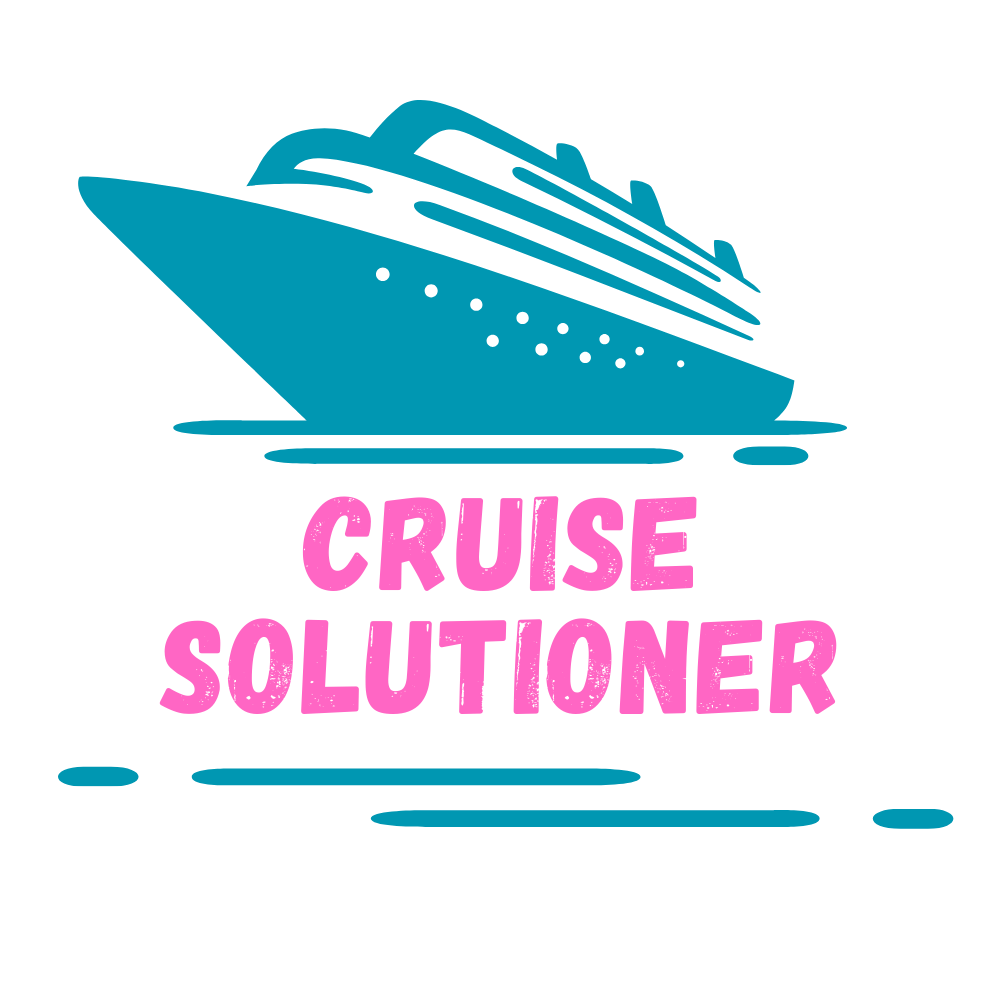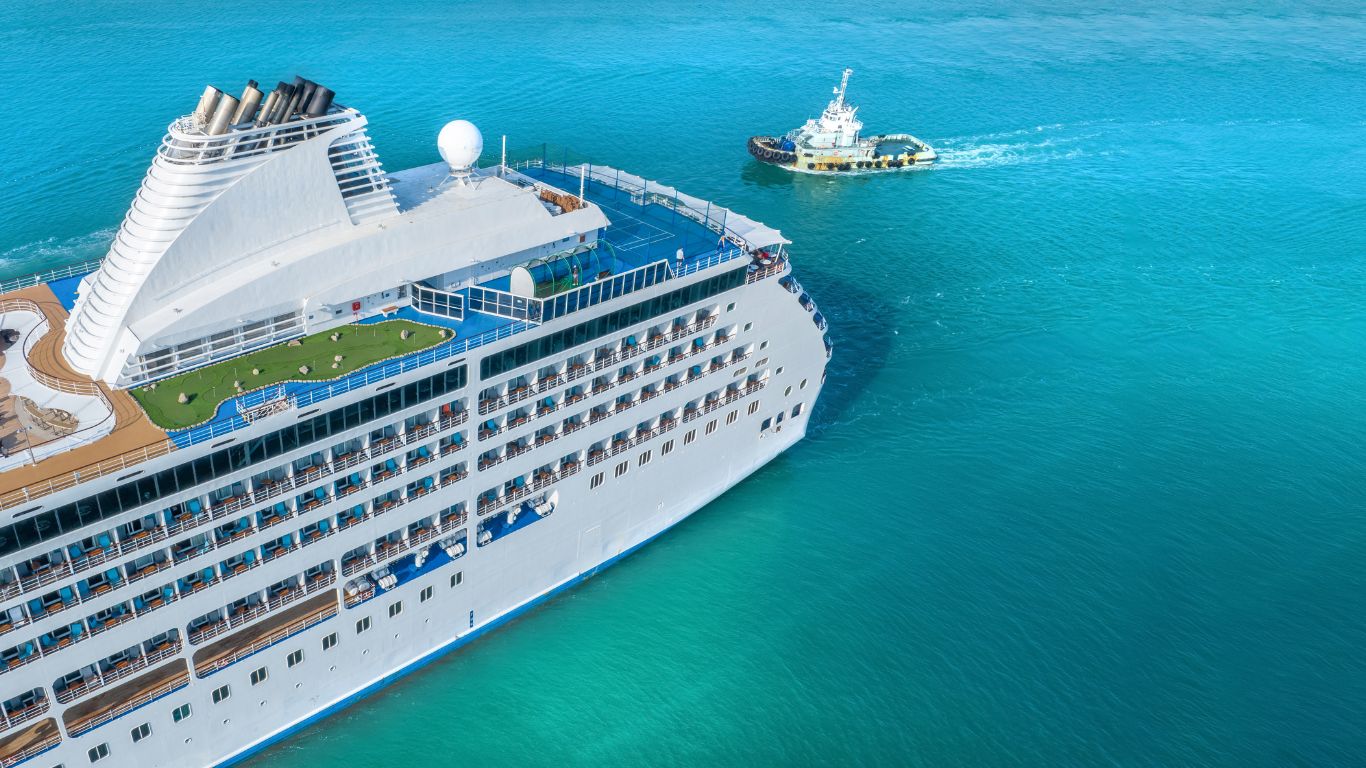Thinking about booking a cruise but not sure how long to set sail? One of the first questions travelers ask is: how long do cruises last? Whether you’re a first-time cruiser, planning a family getaway, or looking for a grand sea adventure, understanding cruise lengths is key to choosing the right trip.
Cruises can range from quick weekend escapes to months-long journeys around the world. The ideal cruise duration depends on your budget, schedule, and travel goals. Here’s what you need to know to pick the perfect cruise length for your next voyage.
Cruise Durations Overview
Cruises vary in length, offering options that suit different schedules and tastes. Here’s a quick overview:
- Short Getaways (3-5 Days): Ideal for a brief escape or sampling the cruising experience without a significant time commitment.
- Week-Long Cruises (7 Days): The most popular cruise duration, providing a balanced mix of sea and port days.
- Extended Journeys (10-14 Days or More): Perfect for those wanting a more immersive experience with deeper exploration.
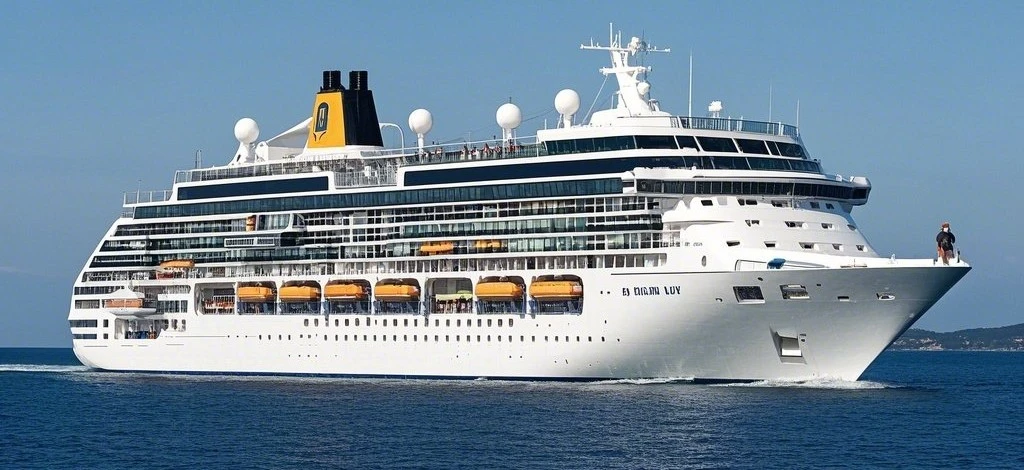
Typical Cruise Durations:
- Short Cruises (2-4 days): These cruises are perfect for a quick getaway or a taste of the cruising lifestyle. They typically visit one or two destinations and offer a limited selection of onboard activities.
- Standard Cruises (5-7 days): These cruises are the most popular option, offering a good balance of time at sea and time in port. They typically visit several destinations and offer a wider variety of onboard activities.
- Extended Cruises (8-14 days): These cruises are ideal for those who want to explore multiple destinations in depth. They typically visit a larger number of destinations and offer a wider range of onboard activities and amenities.
- Long Cruises (15+ days): These cruises are perfect for those who want to immerse themselves in a particular region or experience a unique itinerary. They typically visit a wide variety of destinations and offer a truly immersive experience.
- World Cruises (100+ days): These epic voyages circumnavigate the globe, visiting dozens of countries and continents. They are the ultimate cruising experience for those who have the time and budget to travel the world in style.
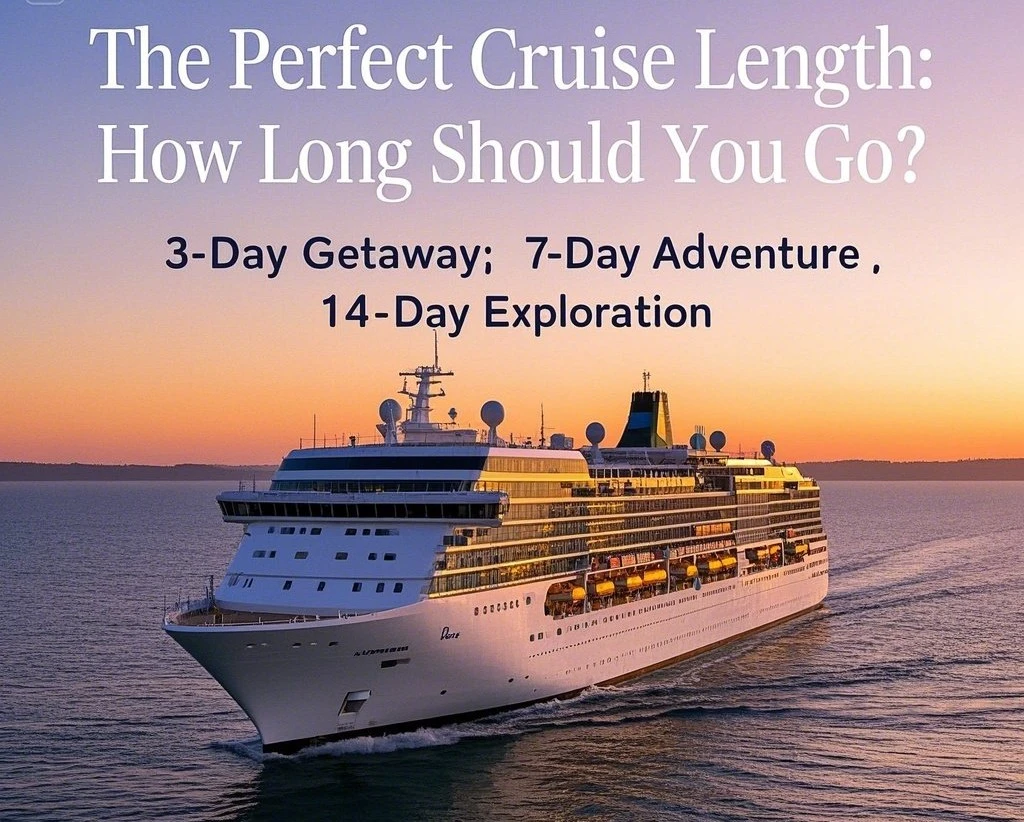
Are All Cruises and Ships Similar?
When considering a cruise, it’s natural to wonder if all cruises and ships are alike. The answer is both yes and no. While all cruises share the fundamental concept of combining travel with a floating resort experience, the differences lie in the details.
1. Types of Cruises
- Ocean Cruises: These are the classic large-ship voyages traversing open seas and visiting ports worldwide. Think of them as the bustling cities of the sea, equipped with extensive amenities.
- River Cruises: Smaller ships offer intimate experiences that navigate inland waterways. Famous rivers like the Nile or Danube often host these vessels, providing a closer, more culturally immersive experience.
- Expedition Cruises: For the adventurists, these cruises journey to remote destinations like Antarctica or the Galápagos, focusing on exploration and education rather than entertainment.
2. Ship Size and Amenities
- Megaships: With a capacity of 3,000 to 5,000 passengers, they feature amenities such as theaters, water parks, and shopping centers. Ideal for families or those seeking a wide array of activities.
- Mid-size Ships: Accommodating around 1,000 to 3,000 passengers, offering a balance between amenity richness and a personalized feel.
- Luxury and Small Ships: Few hundred passengers at most, catering to those who prefer intimacy, personalized service, and exclusive itineraries.
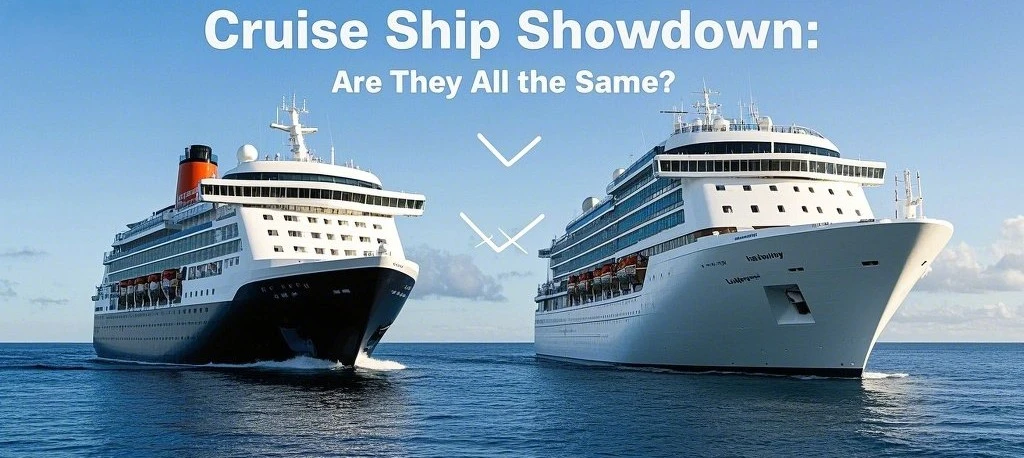
3. Target Audience and Theme
- Family-Friendly: Ships often equipped with kids’ zones, family pools, and diverse dining options. Brands like Disney Cruise Line specialize in this segment.
- Adults or Singles: Some cruises are adult-only, with entertainment and dining catering to a more mature audience. These may include chic lounges and more sophisticated activities.
- Themed Cruises: From culinary to music-focused, these cruises attract niche audiences. They often include guest speakers or special events related to the theme.
4. Itineraries and Destinations
- Popular Routes: Some regions, like the Caribbean or Mediterranean, host a variety of mainstream cruises due to their established tourist routes.
- Unique Journeys: Less frequented destinations or exclusive routes might be offered by specialty cruises prioritizing unique exploration over volume.
In conclusion, while cruises share some core attributes, the experience can dramatically vary based on ship size, type, target audience, and destination. Consider these factors when selecting the cruise that best fits your preferences.
Celebrating Weddings and Vow Renewals at Sea
When it comes to celebrating your love on the open water, there’s nothing quite like a wedding cruise or a vow renewal ceremony. These events offer unique and memorable experiences for couples seeking something out of the ordinary.
Wedding Cruise Experiences
- All-Inclusive Packages: Many cruise lines offer comprehensive packages that take care of everything, from the ceremony to the reception. Your choices can include decorations, music, photography, and even a wedding coordinator to ensure everything goes smoothly.
- Scenic Locations: Exchange your vows against the backdrop of breathtaking ocean views or at exotic port destinations. Whether you’re dreaming of a ceremony on the deck at sunset or an intimate island beach wedding, the possibilities are vast.
- Culinary Delights: Indulge in gourmet dining options tailored for your special day. Whether you prefer a formal sit-down dinner or a more casual buffet-style reception, cruise lines offer diverse culinary experiences crafted by top chefs.
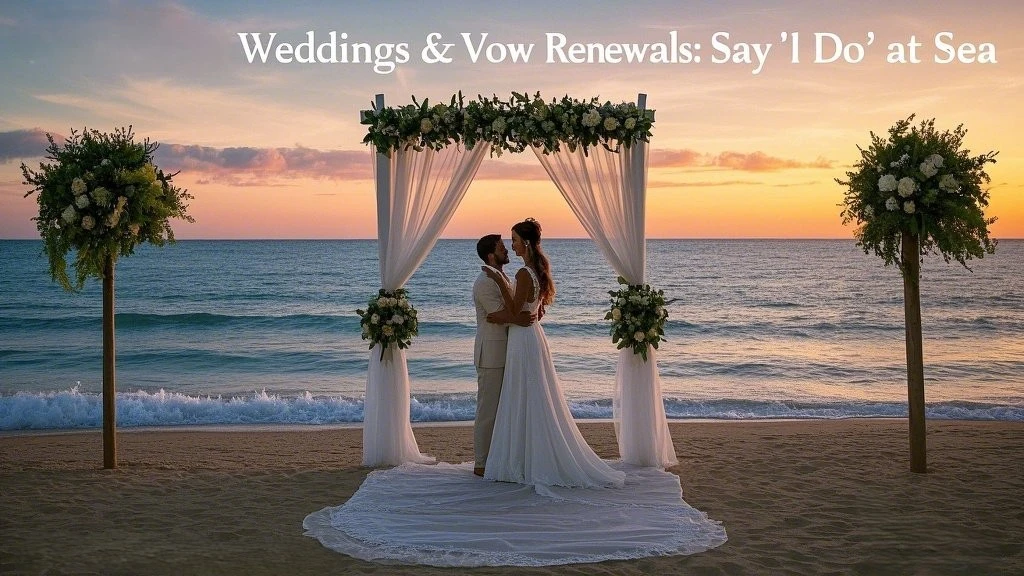
Vow Renewal Ceremonies
- Personalized Ceremonies: Choose a vow renewal package that reflects your unique love story. These packages often allow for customization of vows, settings, and celebrant options, ensuring a ceremony that is as personal as it is memorable.
- Pampering and Relaxation: Enjoy the added luxury options available on many cruises. Spend a day at the spa getting pampered or take part in a couple’s massage—a perfect way to relax before or after your renewal ceremony.
Special Add-ons and Features
- Photography and Videography: Capture every magical moment with professional photography and videography services available on board. These packages often include beautifully edited albums and videos to cherish forever.
- Pre- and Post-Ceremony Events: Extend the celebration with additional gatherings such as engagement parties, bachelor or bachelorette parties, and farewell breakfasts—all designed to make your time at sea unforgettable.
Embarking on a wedding cruise or vow renewal voyage transforms your special day into an extraordinary adventure. With the ocean as your witness, it’s a celebration that promises both romance and memories to last a lifetime.
Revitalize and Rejuvenate: Spa and Fitness Options on a Cruise
Spa Services
Indulge in a tranquil escape with a range of spa options designed to rejuvenate your body and mind:
- Massage Treatments: Experience deep relaxation with therapeutic massages, from Swedish to hot stone, customized to your needs.
- Facial Treatments: Refresh your skin with facials tailored to your skin type. Choose from anti-aging, hydrating, or clarifying treatments.
- Body Treatments: Enjoy full-body scrubs and wraps that exfoliate and nourish, leaving your skin silky smooth.
- Salon Services: Get pampered with manicures, pedicures, and hairstyling from expert stylists.
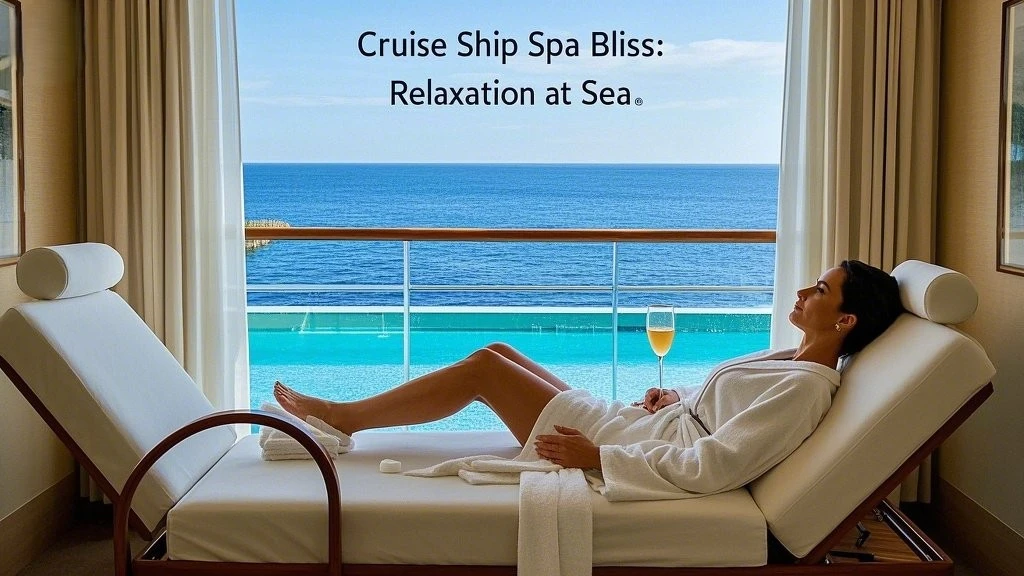
Fitness Facilities
Maintain your workout routine or try something new with a variety of fitness options:
- State-of-the-Art Gym: Work out in a fully equipped gym featuring the latest exercise machines and free weights.
- Fitness Classes: Join group classes, such as yoga, Pilates, spinning, or HIIT, led by skilled instructors.
- Running Track: Enjoy a morning jog or walk with stunning ocean views on the ship’s outdoor track.
- Personal Training: Reach your fitness goals with the help of expert trainers offering personalized workout plans.
Whether you’re seeking relaxation or an invigorating workout, the cruise offers a perfect balance of spa and fitness experiences to enhance your voyage. Enjoy the sea breeze and take the time to nurture both body and spirit on your journey.
Understanding Back-to-Back Cruises
Back-to-back cruises offer a unique opportunity for travelers looking to extend their sea adventure. Simply put, they involve booking consecutive sailings on either the same or different ships, allowing you to enjoy multiple itineraries without having to pack up and head home between trips.
Why Choose a Back-to-Back Cruise?
- Extended Vacation Time: If you’re a cruise enthusiast with time to spare, back-to-back cruises can transform a week-long journey into a two-week or even month-long adventure.
- Cost-Effective: Often, booking multiple cruises at once can lead to better deals and discounts, making it a budget-friendly option for long-haul trips.
- Diverse Destinations: By combining itineraries, you can explore more regions and experience new cultures, all in one extended vacation.
- Seamless Transition: Cruise lines commonly offer streamlined processes for passengers continuing their journey, such as keeping the same cabin and priority embarkation for the second leg.

How Do Back-to-Back Cruises Work?
- Itinerary Selection:
- Choose your desired destinations and check cruise schedules. Some travelers prefer the same ship for both legs to avoid moving luggage, while others might switch ships for an entirely new experience.
- Booking Process:
- When booking, be sure to notify the cruise line or your travel agent that you’re interested in back-to-back cruises to ensure they assist with any logistical arrangements.
- In-Port Transition:
- On the final day of the first cruise, guests with continuous bookings may be required to disembark briefly for customs and immigration checks before re-boarding.
- Loyalty Benefits and Perks:
- Many cruise lines offer loyalty programs where the perks can multiply with extended trips, providing benefits such as free Wi-Fi, dining credits, or exclusive events.
Tips for a Successful Back-to-Back Cruise
- Plan Ahead: Double-check visa requirements or local travel restrictions for each destination on your itinerary.
- Pack Wisely: Organize your luggage with the anticipation of limited unpacking. Consider packing cubes or bags for easy organization.
- Stay Flexible: Be prepared for variations in port schedules or ship changes due to weather or other factors.
- Maximize Onboard Experience: Take advantage of entertainment, dining, and activities. Back-to-back cruising allows for a more leisurely pace to enjoy ship amenities.
Back-to-back cruises are an exceptional way to see more of the world with minimal hassle. Whether you’re chasing tropical sunsets or the allure of European ports, this extended cruise option provides a seamless way to deepen your travel experience. Explore diverse cultures, enjoy onboard luxuries, and embark on a journey that offers more than just relaxation—back-to-back cruising is your ticket to adventure.
Choosing the Right Duration for Your Cruise
Selecting the perfect cruise length is essential to ensuring a memorable and enjoyable experience. Whether you’re a first-time cruiser, traveling with family, or seeking adventure, there’s a cruise option that fits your needs.
1. First-Time Cruisers
For those new to cruising, a short getaway is a fantastic option. These offer:
- A taste of life at sea without being overwhelming.
- The opportunity to explore a few select ports.
- The chance to experience onboard amenities and entertainment.
Examples: Consider cruises that last 2 to 5 days, such as weekend trips to nearby islands or coastal destinations. Short voyages to places like the Bahamas or Baja Mexico provide a quick escape without a significant time commitment.
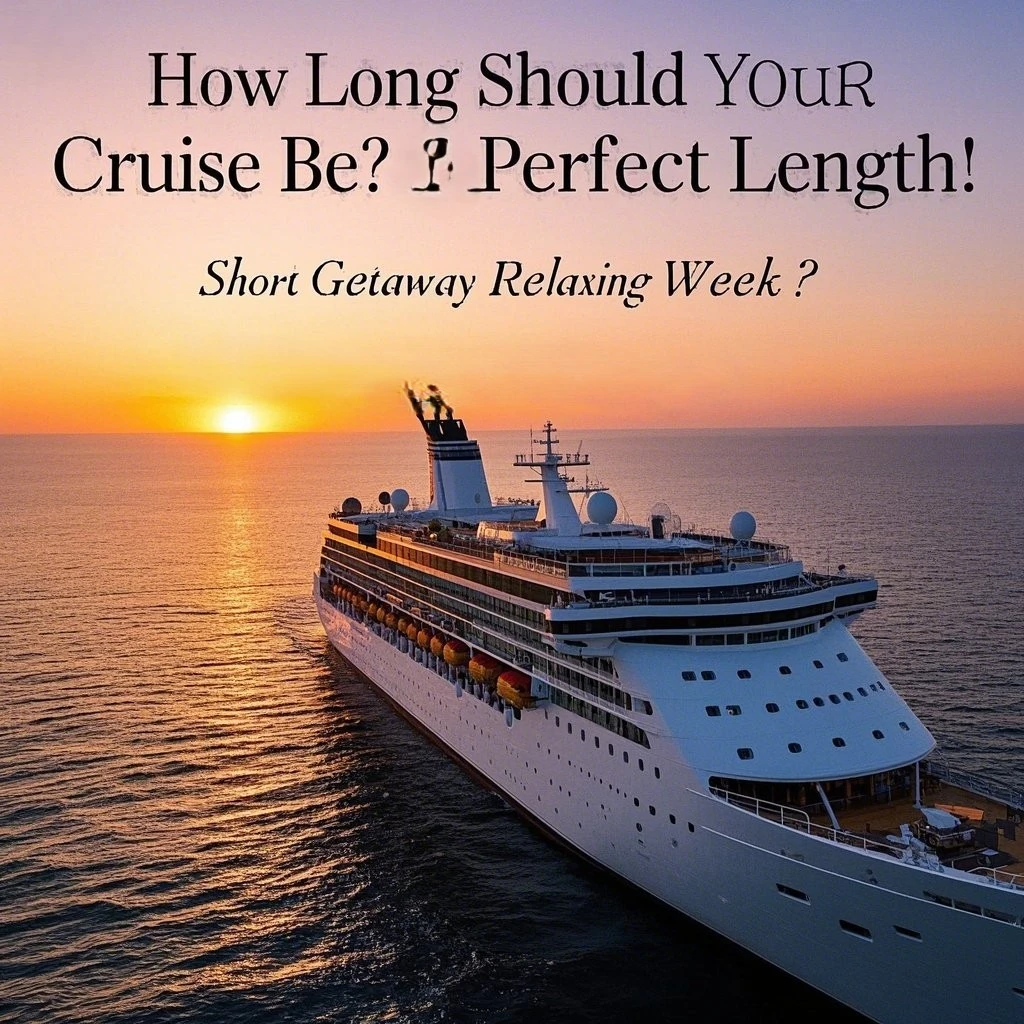
2. Families
Families often opt for week-long cruises. Here’s why:
- They offer a perfect blend of relaxation and adventure.
- There are ample activities for kids and adults alike, from kids’ clubs to spa days.
- Many cruise lines have themed cruises or special family packages.
Examples: Popular week-long itineraries include trips to the Caribbean or the Mediterranean, offering cultural experiences and family-friendly fun. Departures from major ports like Miami or Fort Lauderdale often include stops in vibrant locations such as Jamaica or the Greek Isles.
3. Adventure Seekers
For thrill-seekers, extended journeys open a world of possibilities:
- Access to unique and remote destinations not reachable by shorter cruises.
- Increased opportunities for off-the-beaten-path excursions and adventures.
- More time to explore ship amenities, like rock climbing walls or surf simulators.

Examples: Consider voyages of 10 days or more for destinations like Alaska, the South Pacific, or Europe. These longer cruises provide ample time to immerse yourself in diverse cultures and landscapes. Explore the fjords of Norway or the ancient ruins of Rome on these expansive adventures.
Factors to Consider When Choosing a Cruise Duration:
- Budget: Longer cruises are typically more expensive than shorter cruises.
- Time Constraints: Consider how much time you have available for your vacation.
- Desired Destinations: Some destinations are only accessible on longer cruises.
- Personal Preferences: Some people prefer shorter cruises, while others prefer longer cruises.
By understanding your preferences and constraints, you can utilize cruise search tools and speak with specialists to find an itinerary that fits perfectly with your expectations and schedule. Whether it’s a quick escape or a lengthy expedition, the right cruise awaits you.
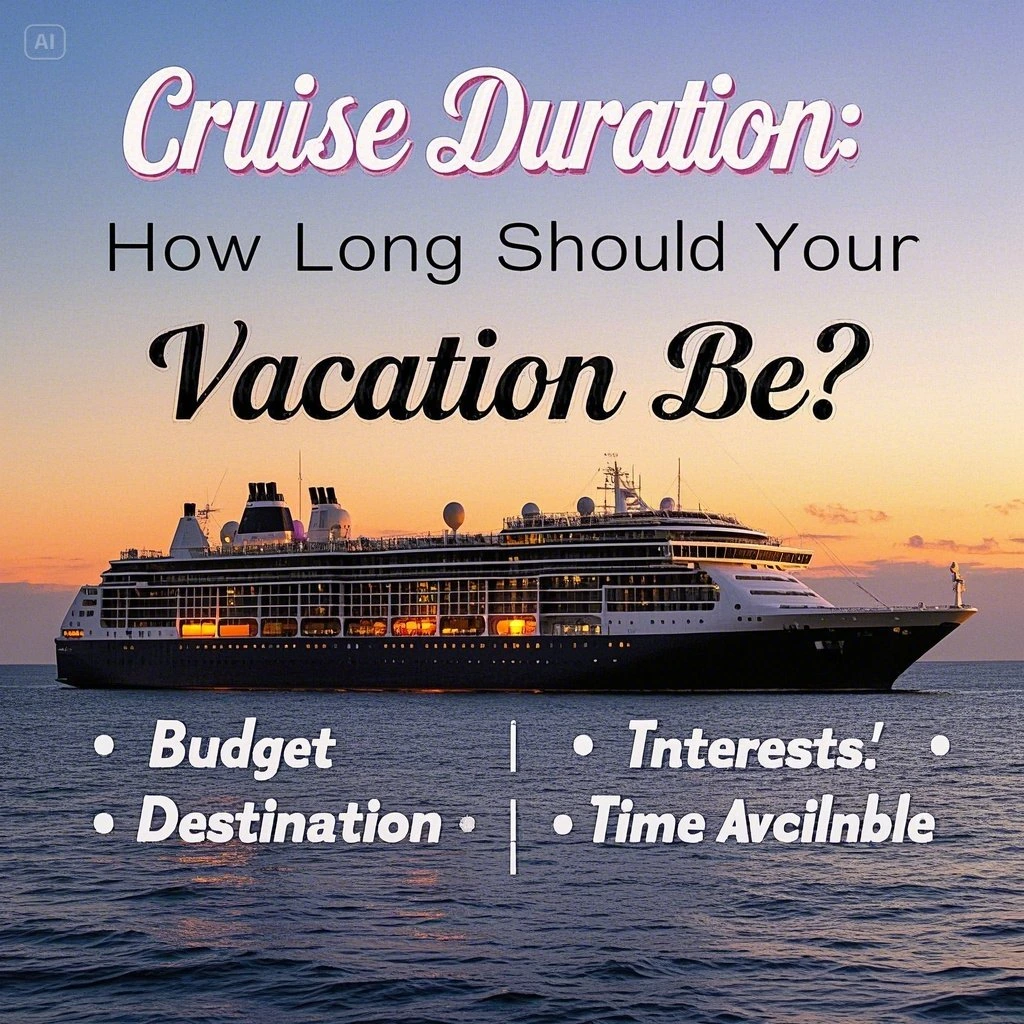
Understanding the Early Saver Promotion
The Early Saver Promotion is a fantastic opportunity for savvy travelers looking to save money while securing their dream cruise vacation. Here’s what you need to know:
What is the Early Saver Promotion?
The Early Saver Promotion is an exclusive offer that allows you to book your cruise at a discounted rate, usually before the general rates are available. By locking in your trip early, you not only secure the best price but also enjoy some additional perks and flexibility.
Key Benefits of the Early Saver Promotion
- Best Price Guarantee
With the Early Saver Promotion, you can confidently book your cruise while knowing you have access to the best rates available. If the price of your cruise drops after you book under this promotion, you are typically eligible for an adjustment in the form of onboard credit or a room upgrade. - Flexible Payment Options
Many promotions provide flexible payment plans, allowing you to spread the cost over several months. This makes budgeting for your vacation a breeze and reduces the financial strain of paying all at once. - First Pick of Staterooms and Itineraries
Booking early means you get the best selection of staterooms and itineraries. Want a balcony room or a suite? Eyeing a specific sailing date? The Early Saver Promotion gives you the chance to secure your preferences ahead of the crowd. - Cancellation Flexibility
The Early Saver often offers more lenient cancellation policies. Look out for specifics such as the ability to make changes to your booking with minimal or no fees, a feature that provides peace of mind should your plans shift.
How to Take Advantage of the Early Saver Promotion
- Plan Ahead: Decide on your travel dates and destinations well in advance, which allows you to maximize the benefits of early booking.
- Monitor Prices: Keep an eye on the cruise prices after booking. If they drop, take advantage of the rate protection feature.
- Work with a Travel Agent: Consider using a third-party travel agent. They often have access to exclusive promotions and can navigate the terms on your behalf.
Things to Keep in Mind
- Terms and Conditions Apply: Always read the fine print associated with the Early Saver Promotion to understand all requirements and limitations.
- Booking Deadlines: Be aware of the deadlines for booking under this promotion to ensure you don’t miss out on the savings.
The Early Saver Promotion is an excellent choice for those who are well-prepared and eager to get the best value for their cruise vacation. Take advantage, save money, and start your journey with peace of mind.
What Guests with Disabilities Should Know Before Cruising
Planning a cruise as a guest with disabilities involves some special considerations to ensure a comfortable and enjoyable journey. Here are key points to keep in mind:
Accessibility Features
- Cabin Accessibility:
- Many cruise lines offer accessible cabins designed with larger doorways, roll-in showers, and lowered closet rods to accommodate wheelchairs and mobility aids.
- Ship Facilities:
- Look for amenities like elevators that access all decks, accessible dining areas, and lowered casino tables.
- Pool lifts and accessible theater seating can enhance your onboard experience.
- Assistance Services:
- Before booking, inquire about available assistance such as boarding help, wheelchair availability, and accessible shore excursions.
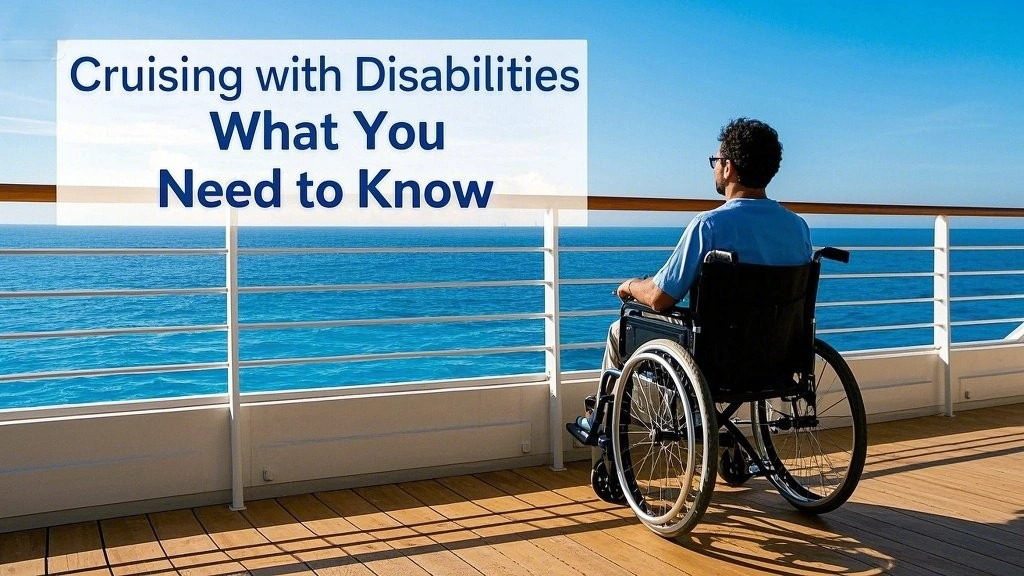
Planning and Booking
- Advance Notice: It’s crucial to inform the cruise line of your needs well in advance to ensure they’re prepared to accommodate you.
- Medical Equipment: Check with the cruise line regarding policies on bringing personal medical equipment like oxygen tanks or CPAP machines.
- Travel Insurance: Consider comprehensive travel insurance that covers medical needs and offers assistance services tailored for travelers with disabilities.
Onboard Experience
- Dining Options: Cruise ships often offer flexible dining arrangements. Specify any dietary needs or preferred seating arrangements for easier access.
- Entertainment: Accessible seating in theaters and early boarding options for shows can be arranged, ensuring you have a comfortable view and experience.
Shore Excursions
- Excursion Suitability: Research and choose excursions that are labeled as accessible. Many tour operators offer specialized trips that cater to varying mobility levels.
- Transportation Options: Ensure the availability of accessible transportation for shore visits, as some ports might have more limited options.
By considering these factors, guests with disabilities can better prepare for a stress-free and enjoyable cruise experience. Always reach out to your chosen cruise line or travel agent for specific advice tailored to your needs.
Essential Air Travel Tips for Your Cruise
Planning air travel for a cruise requires careful consideration to ensure a smooth start to your vacation. Here’s everything you need to know:
Book Flights with Buffer Time
- Arrival: Aim to arrive at your departure city the day before your cruise begins. This helps to mitigate risks such as flight delays or cancellations.
- Departure: Consider late afternoon or evening flights for your return journey. This gives you ample time to disembark without any rushing.
Choose the Right Airport
- Proximity: Select the airport closest to your cruise terminal to reduce travel time and stress.
- Transportation: Investigate transportation options from the airport to the cruise terminal, such as shuttles, taxis, ride-shares, or public transit.
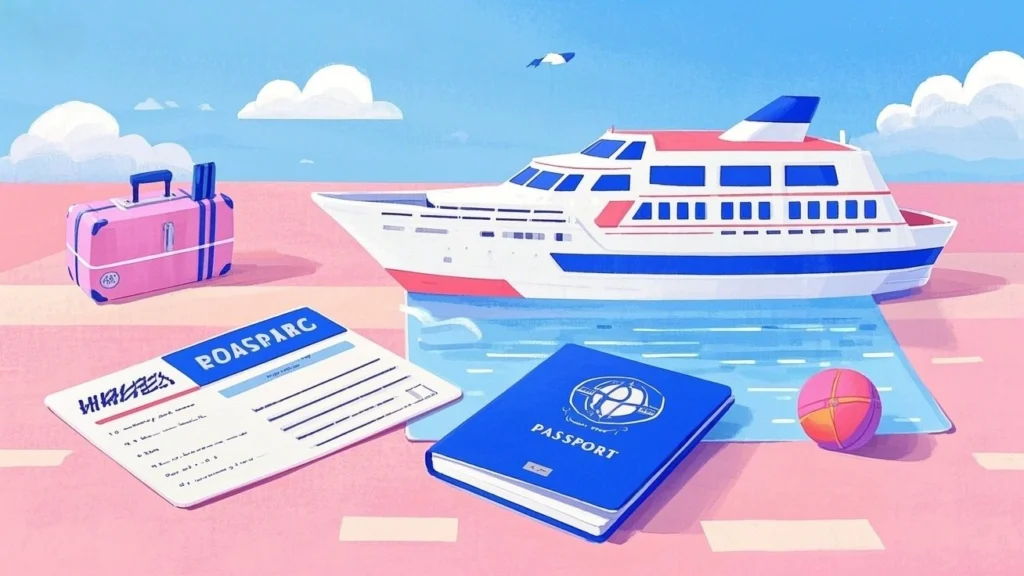
Stay Informed About Flight Policies
- Luggage: Be aware of your airline’s baggage allowance and restrictions. This can affect both carry-on and checked luggage.
- Identification: Ensure your travel documents, including passports and visas, are valid and accessible.
Consider Travel Insurance
Protect your investment by purchasing travel insurance that covers flight cancellations, delays, and lost luggage. It offers peace of mind and potential reimbursement in unforeseen circumstances.
Research Alternate Routes
Flexibility can lead to better deals. Compare direct flights with routes that have layovers for potential savings and availability.
By keeping these air travel tips in mind, you can enjoy a stress-free start to your cruise vacation. Safe travels!
Health Information Passengers Should Know
Enjoyment and Safety First
Traveling is an adventure, but it’s essential to keep health and safety in mind. Here’s what you need to know about health protocols and requirements before setting sail:
- Vaccination Requirements: Ensure you are up to date with any required vaccinations. Some destinations may have specific vaccination mandates.
- COVID-19 Guidelines: Familiarize yourself with the latest COVID-19 protocols, including mask mandates, testing requirements, and social distancing practices. These can vary by destination.

Onboard Health Measures
Once you’re on board, several measures are in place to maintain a healthy environment:
- Sanitation Practices: Expect enhanced cleaning throughout the vessel, particularly in high-touch areas.
- Health Monitoring: Be prepared for regular health checks or daily temperature monitoring as part of the onboard safety measures.
- Medical Facilities: There are usually well-equipped medical facilities on board. Familiarize yourself with the location and services offered for peace of mind.
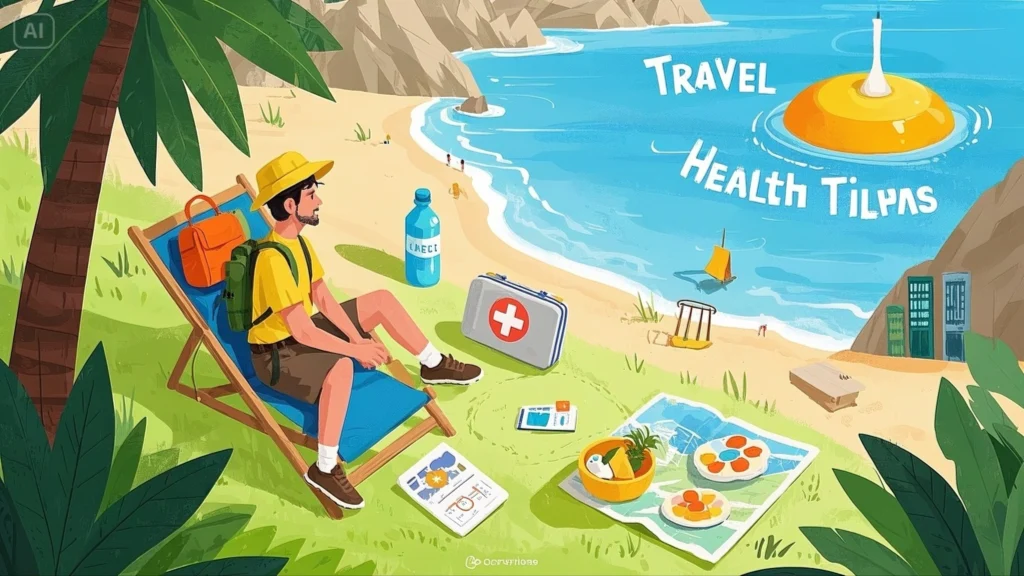
What You Can Do
Take an active part in maintaining your health and safety:
- Personal Hygiene: Wash your hands regularly and use hand sanitizers that are conveniently located throughout public areas.
- Stay Informed: Keep abreast of travel advisories and health updates from verified sources.
- Follow Crew Instructions: The crew is trained to ensure your safety. Cooperation with their requests regarding safety protocols is crucial.
By keeping these health considerations in mind, you can focus on enjoying your trip to the fullest. Happy sailing!
Sailing Health Protocols and Requirements
Essential Guidelines for Safe Sailing
When preparing for a sailing adventure, ensuring your health and safety is paramount. Here are the essential protocols and requirements you should be aware of:
Pre-Departure Health Checks
- Medical Assessment: Complete a thorough health assessment. This may include a questionnaire about recent symptoms or exposure to illnesses.
- Vaccination Records: Ensure you have up-to-date vaccination records. Some destinations may require specific vaccinations, so check local regulations.
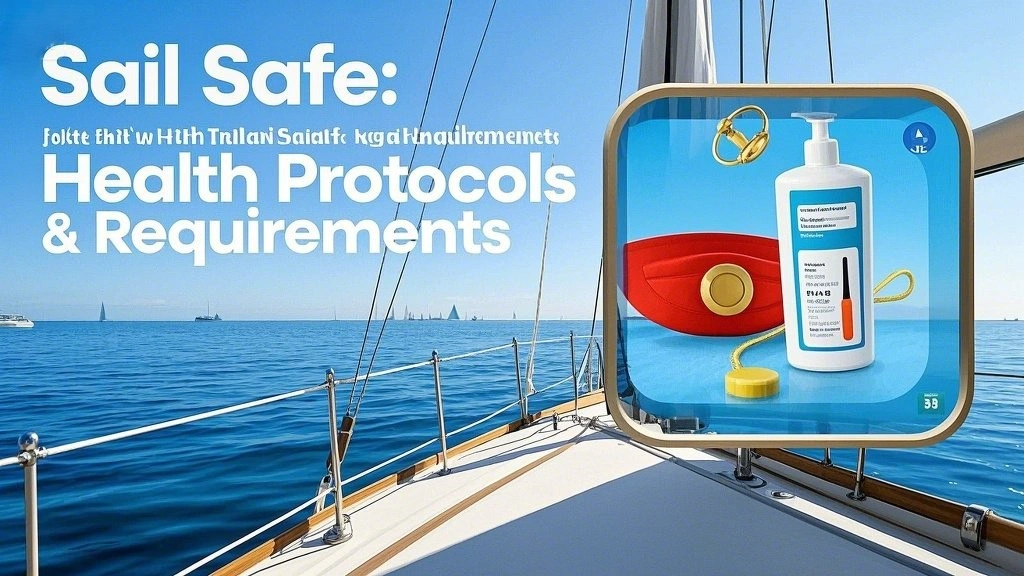
Onboard Safety Measures
- Sanitation Protocols: Regular sanitization of common areas is crucial. Hand sanitizing stations should be available and used frequently.
- Mask Guidelines: Depending on health advisories, mask-wearing may be mandated in certain areas or situations.
Social Distancing and Capacity Regulations
- Reduced Capacity: Expect reduced passenger capacity to facilitate social distancing.
- Safe Distancing: Follow guidelines for maintaining a safe distance from others, especially in dining areas and during events.
Health Monitoring During the Voyage
- Temperature Checks: Regular temperature screenings might be conducted to promptly identify any health issues.
- Isolated Medical Facilities: Ensure the vessel is equipped with a dedicated space for medical evaluation and isolation if necessary.
Post-Trip Requirements
- Testing: Some regions might require a negative test result upon returning.
- Quarantine: Be aware of potential quarantine requirements based on your travel destinations.
By adhering to these health protocols and requirements, you ensure a safer sailing experience for yourself and others. Always stay updated on the specific guidelines set by health authorities and your travel destination.
Understanding the Safety Briefing and Muster Station Drill
When setting sail on your cruise journey, one of the first things you’ll encounter is the safety briefing and muster station drill. These are essential procedures designed to ensure your safety and well-being while on board. Here’s what you need to know:
What is a Muster Station?
A muster station is a specific location on the ship where you are required to gather in case of an emergency. Each passenger is assigned a designated muster station, and it’s crucial to familiarize yourself with its location as soon as you board.
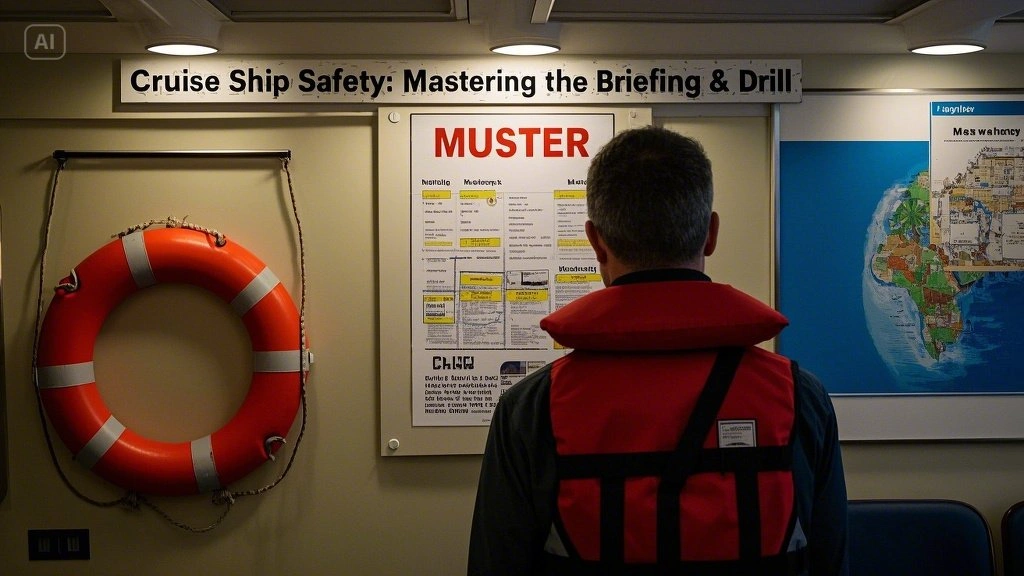
The Importance of the Safety Briefing
The safety briefing is a comprehensive session that highlights:
- Emergency Procedures: Understanding what to do in various emergency scenarios.
- Lifesaving Equipment: Familiarization with life jackets, lifeboats, and other vital equipment.
- Crew Instructions: Guidance on following crew orders efficiently during an emergency.
Participating in this briefing ensures you are well-prepared, reducing panic and confusion in unexpected situations.
What Happens During the Muster Drill?
The muster drill, often conducted within the first 24 hours of boarding, includes:
- Whistle Signals: Learning the meaning of various horn blasts and alarms.
- Gathering at Muster Station: Practicing the route to your muster station.
- Life Jacket Demonstration: Crew members will demonstrate the correct way to wear and secure a life jacket.
- Role of Crew: Identifying key personnel who are trained to assist during emergencies.
Key Takeaways
- Mandatory Participation: Attendance is not optional; it is required by international maritime law for your safety.
- Timing: This drill is swift and typically takes about 30 minutes.
- Language Support: Instructions are available in multiple languages to accommodate all passengers.
By staying attentive during both the briefing and the drill, you equip yourself with the essential knowledge to navigate any unexpected events confidently during your cruise. Your safety is the top priority, so make sure to pay close attention and ask questions if you need further clarification.
Cruise Ship Safety and Security Measures
When setting sail on a cruise adventure, the well-being of passengers is of utmost importance. Here’s a comprehensive breakdown of the safety and security measures you’ll find on most cruise ships:
Passenger Rights and Protection
Cruise passengers are protected under a Passenger Bill of Rights. This document ensures that guests receive clear information on topics such as itineraries, obligations in case of delays, and procedures for cancellations or emergencies. It guarantees that passengers are treated with dignity and respect throughout their journey.
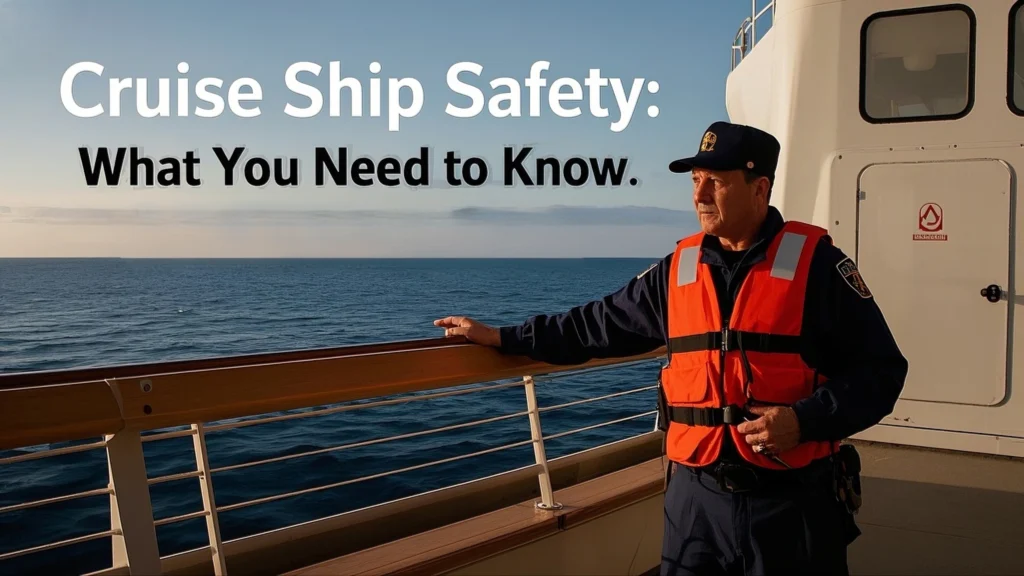
Comprehensive Guest Screening
Security begins even before boarding. Guests are subject to thorough screening procedures to ensure the safety of everyone onboard. This typically includes baggage checks, metal detectors, and identity verification. These measures are essential in maintaining a secure environment for all travelers.
Robust Safety and Security Presence
Cruise ships maintain a vigilant security presence. Trained personnel are on duty around the clock, ensuring that any potential issues are promptly addressed. This includes monitoring public spaces, assisting in emergencies, and ensuring compliance with safety protocols.
Essential Safety Drills
One of the first experiences you’ll have aboard is a safety briefing, often called a muster drill. During this mandatory exercise, passengers are shown how to use life jackets and are directed to muster stations, which serve as emergency assembly points. These drills are crucial for ensuring everyone knows how to respond in the unlikely event of an emergency.
Health Protocols and Information
Keeping passengers healthy is also a priority. Cruise lines provide general health information and may have partnerships with medical organizations for comprehensive onboard care. Expect resources such as hand sanitizing stations, health advisories, and access to medical staff to address any health concerns promptly.
By implementing these extensive measures, cruise lines strive to provide a safe and secure environment, allowing guests to focus on relaxation and enjoyment.
After Your Cruise: Handling Post-Cruise Questions
Once you’ve disembarked and are adjusting back to life on land, several post-cruise inquiries might come to mind. Here’s a guide to help you navigate them:
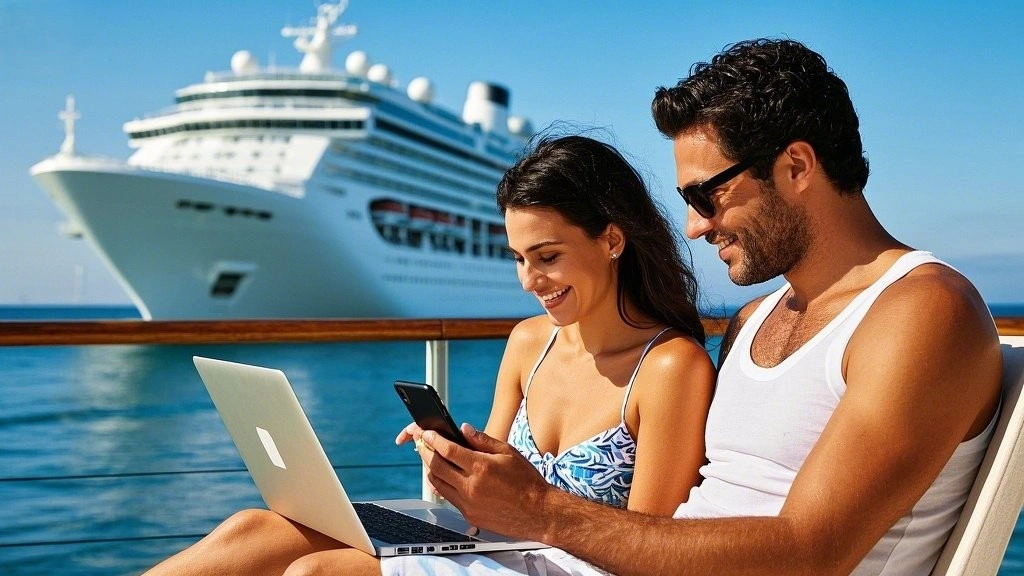
1. Missing Items
Did you leave something on the ship? Contact customer service as soon as possible. Most cruise lines have dedicated lost-and-found departments. Provide a detailed description of the item to increase your chances of recovery.
2. Billing Issues
It’s essential to review your final bill. Look for any discrepancies in charges for on-board purchases or excursions. If something seems amiss, reach out to the cruise provider’s billing support team. Have your itinerary and payment method details on hand to expedite the process.
3. Loyalty Program Points
If you’re enrolled in a loyalty program, your recent cruise might have earned you points or benefits. Double-check your account to ensure it’s updated. If there are discrepancies, contact the program’s customer service for clarification.
4. Feedback and Complaints
Providing feedback can help improve cruise services. Whether you had a fantastic time or faced challenges, most cruise operators welcome your input. Fill out post-cruise surveys or reach out directly if you have specific concerns.
5. Photos and Memories
Did you purchase or pose for professional photos on board? Follow up with the cruise company’s media service to access or order prints that you may have missed picking up.
6. Health Concerns
Concerned about your health post-cruise? Reach out to a healthcare provider if you experience any unusual symptoms. The Centers for Disease Control and Prevention (CDC) provides guidelines for travelers which can be helpful.
7. Future Cruise Offers
Interested in booking again? Check any emails or mail received post-cruise for exclusive future cruise offers. These deals often come with limited-time discounts or bonuses.
By addressing these common post-cruise inquiries promptly, you can ensure a smooth transition back to your daily routine and lay the groundwork for your next adventure at sea.
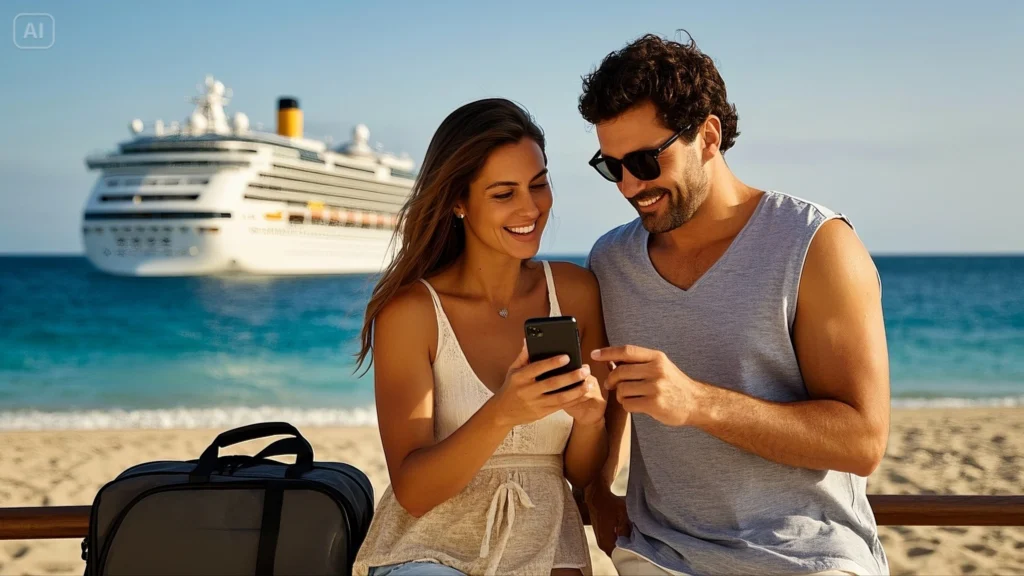
Benefits and Attractions of Each Cruise Duration
- Short Getaways: Quick refreshment and rejuvenation; perfect for busy schedules.
- Week-Long Cruises: Balance of relaxation and discovery; accessible to many popular destinations.
- Extended Journeys: Deeper cultural immersion and exploration; visit lesser-known ports.
Tips for Choosing the Right Cruise Duration:
Here are some additional tips to help you choose the right cruise duration:
Consider Your Travel Experience:
If you’re new to cruising, a shorter trip (3–5 days) is a great way to test the waters without a significant time commitment.
Experienced cruisers might prefer longer itineraries to explore more destinations or enjoy an extended onboard experience.
Match the Duration to Your Destination:
Short cruises often focus on close-to-home destinations or specific regions like the Bahamas or Mexico.
Longer cruises may offer the chance to visit multiple countries, exotic locations, or embark on transoceanic journeys.
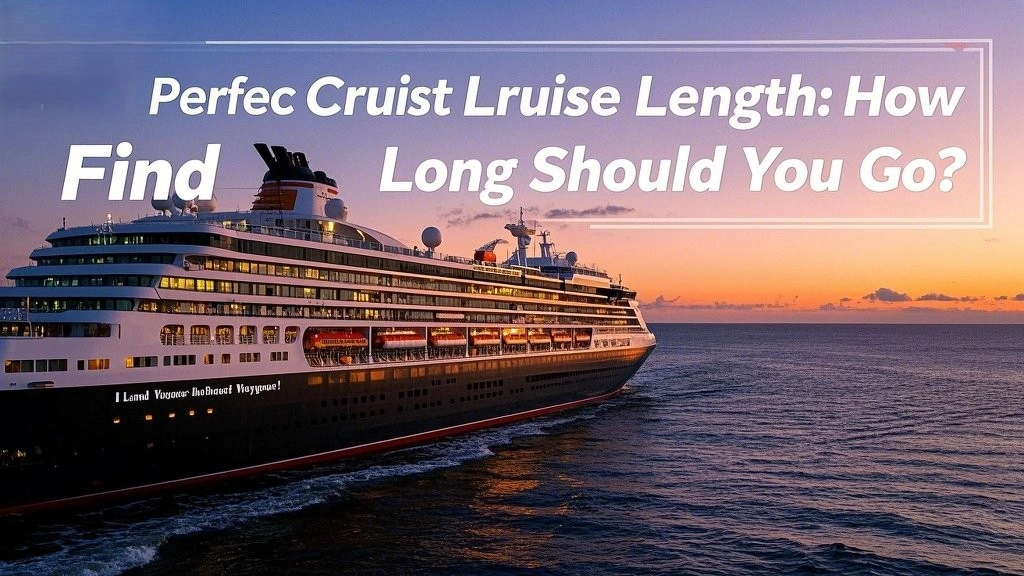
Factor in Travel Time:
Don’t forget to account for the time it takes to get to and from the departure port. A 7-day cruise might effectively require 9–10 days of travel.
Think About Activities and Relaxation Needs:
A shorter cruise might pack the schedule with activities, while longer cruises allow more downtime to relax and enjoy the ship.
Check for Special Events:
Some cruises align with holidays, themed events, or seasonal itineraries (e.g., Christmas markets in Europe). The timing could influence your decision.
Understand the Itinerary Pace:
Shorter cruises often have fewer ports and may focus on the ship experience, while longer ones can include multiple stops and excursions, offering a balance of adventure and relaxation.
Evaluate Onboard Amenities and Style:
Some luxury cruise lines cater specifically to longer trips with enhanced experiences, while budget-friendly options often thrive with shorter sailings.
By keeping these points in mind alongside your budget, time, and destination preferences, you’ll find the perfect cruise duration for your needs.
Cruise Ship Connectivity: Wi-Fi Services and Essential Apps
Cruising doesn’t mean disconnecting. Today’s cruise ships offer various Wi-Fi services and apps to keep you in touch with the world.
Wi-Fi Services
- Tiered Connectivity Options: Most cruise lines provide several Wi-Fi packages, ranging from basic browsing to premium services. This ensures you can select a plan that suits both your needs and budget.
- Satellite-Based Internet: Expect reliable, albeit slower compared to land-based internet, connectivity. Satellite technology allows you to stay online even when you’re miles out at sea.
- Unlimited Access Passes: Many cruises now offer unlimited access passes for those who don’t want to worry about data limits. This is ideal for families or heavy internet users.
Essential Apps for Staying Connected
- Social Media Apps: Keep up with friends and family with your favorite social platforms. Most packages allow moderate picture uploads and video streaming.
- Communication Platforms: Apps like WhatsApp, Messenger, and Skype ensure that messaging and calls are just a tap away.
- Entertainment and News Apps: For those who crave news updates or want to binge on shows, apps like Netflix, Spotify, and Flipboard can be essentials.
Onboard Communication Tools
Cruise lines often have dedicated apps that enhance your experience onboard. These apps typically offer:
- Daily Schedules: Check out daily activities, entertainment options, and dining menus.
- Ship Navigation: Interactive maps guide you around the ship so you never get lost.
- Booking Services: Reserve your spot for exclusive dining, shows, or excursions directly from the app.
By using these Wi-Fi services and applications, you can enjoy the perfect blend of relaxation and connectivity, ensuring you stay looped in while cruising the open seas.
Planning Shore Excursions and Onboard Activities
Here are additional tips to optimize your shore excursions and onboard activities:
- Research Ports in Advance:
- Look up the top attractions, cultural experiences, and local highlights of each port. This helps you prioritize your time efficiently and ensures you don’t miss must-see sights.
- For instance, if your cruise takes you to the Caribbean, explore options like snorkeling in crystal-clear waters or visiting historic sites.
- Book Key Excursions Early:
- Popular excursions often sell out quickly, especially on shorter cruises. Secure your spots as soon as bookings open to avoid disappointment.
- Consider excursions tailored to your interests, such as culinary tours, adventure sports, or cultural immersion experiences.
- Mix Active and Relaxing Activities:
- On shorter cruises, prioritize active excursions like snorkeling, hiking, or city tours to make the most of your time.
- On longer trips, schedule downtime with beach visits, spa treatments, or leisurely exploration to balance your itinerary.
- Understand Time in Port:
- Know how long you’ll have at each destination to avoid feeling rushed. Short stops may limit your options, while overnight stays offer more flexibility to explore.
- Use this to plan whether you’ll explore independently or join guided tours for a more structured experience.
- Be Flexible with Onboard Activities:
- Plan to attend shows, classes, or unique dining experiences but leave room for spontaneous choices, especially on longer cruises.
- Take advantage of onboard amenities during sea days to recharge.
- Leverage Cruise Line Resources:
- Many cruise lines offer detailed port guides, shore excursion packages, and onboard activity planners to help you decide.
- Check if they provide online booking tools for a seamless planning experience.
- Consider Independent Tours:
- Sometimes booking directly with local providers offers a more personalized experience than cruise-organized excursions, but ensure timing aligns with ship departure.
- Verify reviews and safety standards of independent operators before committing.
- Keep Your Energy Levels in Mind:
- For back-to-back port days, avoid overbooking yourself. Save some energy to enjoy the ship’s amenities, especially on sea days.
- Use sea days as opportunities to explore onboard entertainment, fitness facilities, or simply relax.
- Pack for Activities:
- Bring appropriate clothing and gear, such as swimwear, walking shoes, or a daypack, to be prepared for a variety of experiences.
- Consider packing binoculars or a waterproof camera for capturing memorable moments.
- Prioritize Safety and Timing:
- Always return to the ship well before departure times to avoid missing embarkation.
- Familiarize yourself with local customs and safety advisories to ensure a smooth and enjoyable excursion experience.
Whether you’re exploring bustling city ports or serene island getaways, these strategies will enhance your travel experience, ensuring each excursion is as rewarding as the last.
What Outdoor Fun Activities Are Available?
Exploring outdoor activities onboard ensures a dynamic and enjoyable experience for every traveler. Whether you’re seeking relaxation or adventure, there’s something to cater to your tastes.
Thrill-Seeking Adventures
- Ropes Courses: Challenge yourself on high-flying ropes courses that test your balance and courage, all while offering stunning views of the sea.
- Water Slides: Take the plunge down exhilarating water slides designed for thrill-seekers and families alike.
- Mini Golf Courses: Enjoy a friendly competition on creatively themed mini-golf courses that cater to children and adults.
Relaxation and Leisure
- Poolside Lounging: Kick back on a sunbed by the pool, perfect for unwinding with a good book or simply basking in the sun.
- Jogging Tracks: Start your day with a refreshing run, accompanied by ocean breezes, on designated jogging tracks.
Family-Oriented Activities
- Basketball Courts: Shoot some hoops or engage in a lively game on outdoor basketball courts.
- Ping Pong: Challenge family and friends to a fast-paced game of table tennis.
These outdoor activities ensure that every moment spent on board is filled with excitement, relaxation, and memorable experiences. So, pack your sneakers and sunscreen, and get ready to enjoy the open-air fun!
What Dining and Snacking Options Are Available?
When it comes to satisfying your cravings, options abound. Here’s a comprehensive look at the dining and snacking options to tantalize your taste buds.
Diverse Dining Experiences
From casual bites to gourmet meals, the options cater to every palate:
- Buffet Style: Dive into a wide selection of cuisines at the buffet, where you can build your own plate with endless choices.
- Specialty Restaurants: Enjoy a more intimate dining experience with menus crafted by renowned chefs, offering everything from sushi to prime steaks.
- Casual Dining: Perfect for a laid-back lunch or dinner, enjoy burgers, pizza, and freshly made sandwiches.
Snacking Anytime
For those looking for something light:
- Snack Bars: Grab-and-go snacks such as chips, pastries, and fresh fruits.
- Cafés: Indulge in freshly brewed coffee and delectable pastries at any time of the day.
Flexible Beverage Options
Quench your thirst with a variety of drink programs designed to suit your needs:
- Soft Drinks: Enjoy unlimited access to a selection of sodas and juices.
- Premium Drinks: Opt for packages that include cocktails, wines, and beers to complement your dining.
Policies Onboard
While indulging, keep these points in mind:
- Alcohol: Ensure familiarity with the drinking age and consumption policies.
- Bringing Your Own: Check the restrictions on bringing beverages onboard to avoid surprises.
With so many options, dining becomes an adventure in itself, no matter your preference or dietary needs.
What to Expect on Embarkation Day and How to Check In
Embarkation day is an exciting start to your adventure, but it can also feel overwhelming if you’re not prepared. Here’s what you need to know to ensure a smooth process.
Arriving at the Port
Arrive at the port early to avoid long lines and give yourself plenty of time. Check your tickets or cruise documents for your assigned arrival window. This helps manage the flow of passengers and speeds up the check-in process.
Check-In Process
- Documents Ready: Have your identification, boarding pass, and any other necessary travel documents ready. Keep them accessible to ensure a quick check-in.
- Online Check-In: Many cruises offer online check-in prior to your arrival. Completing this step in advance not only saves time but also allows you to fill in any required health declarations.
- Security Clearance: Just like at the airport, you will go through a security screening. Be ready to place your bags through scanners and walk through metal detectors.
Luggage Handling
- Label Your Bags: Ensure all luggage is clearly labeled with your name and cabin number. This is crucial for your bags to be delivered directly to your room.
- Carry-On Essentials: Pack a small carry-on with necessities such as medications, travel documents, a change of clothes, and any valuables. It might take a few hours for your checked luggage to reach your cabin.
Boarding
After check-in, you’ll receive a boarding group number. Once your group is called, you can make your way onto the ship. Once onboard, explore the ship, enjoy a meal, or drop by the welcome event to kick off your journey.
By keeping these steps in mind, embarkation day can be less stressful and more enjoyable, setting the perfect tone for your cruise.
Transportation Options from the Airport to the Pier
Planning your journey from the airport to the pier? Here’s a detailed look at your options to ensure a seamless transition from air travel to your cruise embarkation.
Shuttle Services
Many travelers find shuttle services to be convenient and efficient. Airports often partner with reliable shuttle service providers that offer drop-offs directly at the pier. These services typically allow you to share a ride with other cruise-goers, helping to reduce costs while you enjoy a more direct route to your destination.
Public Transportation
If you prefer a more budget-friendly option, check out the local public transportation system. Buses and trains are commonly available and provide a cost-effective way to travel from the airport to the pier. Ensure to check the schedules and routes in advance, as public transit may have more limited service times.
Taxis and Ride-Sharing
For a more personalized and flexible option, taxis and ride-sharing services are readily available just outside the airport terminals. These provide direct and faster travel to the pier, allowing you to avoid any potential layovers or multiple stops associated with other forms of transportation.
Rental Cars
Travelers looking for the utmost in convenience and autonomy might consider renting a car. Most airports host a variety of rental car agencies, providing you with the freedom to explore the area both before and after your cruise. Make sure to plan your parking in advance, as space can be limited near the pier.
Private Transfers
For those seeking comfort and luxury, private transfer services offer personalized pick-up and drop-off arrangements. This option ensures a hassle-free travel experience with the added benefit of luggage assistance and exclusive service. Booking in advance is highly recommended to secure the best rates and availability.
Each of these options varies in cost, convenience, and comfort. Take your itinerary and budget into account when choosing the best way to navigate from the airport to your ship’s gangway.
Cruise Terminal Locations and Parking Information
When planning your cruise getaway, understanding the details of cruise terminal locations and parking options can make your departure smoother.
Terminal Locations
Most major cities with ports offer a variety of terminals. Here’s what to consider:
- Port Accessibility: Terminals are often situated near the city center or accessible via public transportation, making it easy for travelers to reach them by bus, train, or taxi.
- Terminal Facilities: Many terminals offer amenities such as waiting lounges, dining options, and shops to enhance your pre-boarding experience.
Parking Options
Finding the right parking for your cruise duration is crucial. Options typically include:
- On-Site Parking:
- Proximity: Located close to the terminal to allow for easy access.
- Security: Offers monitored and secure parking lots, often with 24-hour surveillance.
- Off-Site Parking:
- Cost-Effective: Generally more affordable than on-site options.
- Shuttle Services: Many off-site lots provide complimentary shuttles to and from the terminal.
- Pre-Booking Services:
- Online Reservations: Secure a spot ahead of time and often at a discounted rate.
- Cancellation Policies: Check for flexible booking terms in case travel plans change.
By considering these aspects, you can ensure a seamless start to your cruise journey. Research specific ports for detailed information about their facilities and services to plan efficiently.
What Should I Pack for My Cruise?
Embarking on a cruise is an exciting adventure, but packing can sometimes feel overwhelming. Let’s simplify the process with a comprehensive guide to ensure you have everything you need, without overpacking.
Essential Clothing
- Casual Wear: Pack breathable, comfortable clothing for day trips and exploring the ship. Think lightweight fabrics for warm days.
- Evening Attire: Some cruises have formal nights. A dress or nice slacks and a button-down shirt should suffice.
- Swimwear: Bring at least two swimsuits to alternate between, especially if you plan to spend plenty of time by the pool.
- Workout Gear: If you plan to hit the gym or join fitness classes, pack appropriate activewear.
Footwear
- Comfortable Shoes: Walking shoes or sneakers are ideal for shore excursions.
- Sandals/Flip-Flops: Great for lounging by the pool or strolling on the beach.
- Formal Shoes: Eye-catching loafers or heels for formal evenings.
Accessories and Essentials
- Hat and Sunglasses: Keep the sun at bay with protective eyewear and a wide-brimmed hat.
- Sunscreen: Opt for high SPF to shield your skin from harsh sun rays.
- Light Jacket or Sweater: Evenings can get cool aboard the ship or on deck, so pack a lightweight sweater or jacket.
Electronics and Documentation
- Portable Chargers: Keep your devices powered during long excursions.
- Travel Adapters: Ensure compatibility with port-country outlets if necessary.
- Important Documents and IDs: Passports, cruise tickets, and any travel insurance documents should be kept in a secure, easily accessible travel wallet.
Toiletries and Medications
- Basic Toiletries: Pack travel-sized shampoo, conditioner, body wash, and toothpaste.
- First-Aid Kit: A small kit with band-aids, antiseptic wipes, and seasickness medication is a good safety net.
Additional Tips
- Day Bag: A small backpack or tote bag for day trips will be invaluable.
- Reusable Water Bottle: Stay hydrated with your own refillable bottle.
- Specialty Items: Snorkeling gear, binoculars, or a good book can enhance your cruise experience.
By packing smartly and focusing on these essentials, you’ll be prepared for anything the cruise journey throws at you. Happy sailing!
Age Policies for Onboard Activities and Programs
Navigating age policies for onboard activities and programs can be crucial for planning a family-friendly cruise experience. Here’s what you need to know:
Age-Specific Programs
- Young Children (Under 2 and Ages 2-11)
- Programs are designed to engage the youngest travelers with age-appropriate activities.
- Options include creative play, storytelling, and themed events.
- Teenagers (Ages 12-17)
- Teens can enjoy spaces tailored just for them, featuring events like dance parties, game nights, and social meetups.
General Policies
- Infant and Toddler Guidelines
While some activities welcome those under 2 years old, others may require parental supervision or refunds if childcare is unavailable during specific times. - Child Enrollment and Registration
Ensure your child is enrolled in programs designed for their age group to maximize safety and enjoyment.
Things to Know Before You Go
- Identification Requirements
Be prepared to provide proof of age upon registration for certain activities. - Supervision Protocols
Some programs mandate adult attendance or supervision, especially for younger children.
By keeping these age guidelines in mind, you’ll ensure a more seamless and enjoyable cruising experience for your family.
Policies for Minors, Infants, and Pregnancy on Cruises
When planning a cruise, it’s essential to understand the specific policies related to minors, infants, and pregnant passengers. Here’s a comprehensive overview to help you navigate these guidelines:
Traveling with Minors and Infants
- Age Requirements:
- Generally, infants must be at least six months old to sail. However, some longer voyages may require infants to be at least 12 months.
- Minors, usually defined as guests under 18 years of age, must be accompanied by an adult.
- Documentation:
- A valid passport is typically required for international cruises. For domestic cruises, birth certificates may suffice, though passports are recommended.
- If traveling without both parents, a notarized letter of consent from the absent parent(s) may be necessary.
- Accommodations:
- Many cruise lines offer cribs or rollaway beds for infants. It’s wise to request these in advance due to limited availability.
- Activities and Supervision:
- Supervised youth programs are often available, catering to various age groups. These are designed to keep children entertained with age-appropriate activities.
- Parents should ensure they understand the registration process and opening hours for these programs.
Pregnancy Policies
- Medical Clearance:
- Pregnant individuals are usually required to provide a doctor’s letter confirming their due date and that they are fit to travel.
- Restrictions:
- Most cruise lines do not permit guests to sail if they will enter their 24th week of pregnancy during the cruise. This policy ensures the health and safety of both the mother and the baby.
- Onboard Facilities:
- While medical facilities are available, they are primarily equipped for emergency care. Guests should plan accordingly for any specific prenatal care needs.
Travel Insurance
- Considerations for Families:
- Travel insurance can provide coverage for unexpected events, such as trip cancellations or medical emergencies. Ensure that the policy covers infants and pregnancy-related concerns for peace of mind.
Understanding these policies ensures a smoother cruise experience for families and expectant travelers. Always check with your specific cruise line for the most accurate and detailed information, as policies can vary.
Essential Travel Documents and Completing Online Check-In
What Travel Documents Are Required?
Before embarking on your journey, ensure you have all the necessary travel documents:
- Valid Passport: A must-have for international travel; make sure it’s not set to expire soon.
- Visa (if applicable): Check if your destination country requires a visa and apply well in advance.
- Government-Issued ID: For domestic flights, a driver’s license or other government ID may suffice.
- Boarding Pass: Obtain this during online check-in or at the airport.
- Travel Insurance: Highly recommended for peace of mind, covering unexpected events like medical emergencies or trip cancellations.
How to Complete Online Check-In
Online check-in is a hassle-free way to streamline your travel process. Here’s how to do it:
- Visit the Airline’s Website: Log in with your booking reference and last name.
- Select ‘Check-In’: Follow the prompts to begin the process, typically available 24-48 hours before departure.
- Choose Your Seat: If not assigned, pick your preferred option for more convenience during the flight.
- Confirm Personal Details: Ensure your name, passport, and contact information are correct.
- Submit Any Necessary Documentation: Upload any additional required documents, such as a visa.
- Receive Your Boarding Pass: Download or print it at home, or save it to your smartphone for easy access.
By following these steps, you’re all set for a smoother travel experience. Always keep digital copies of your documents just in case. Happy travels!
Understanding Gratuities on Your Cruise
How Gratuities Work
Gratuities, commonly known as tips, are a standard part of cruising and are generally added to your onboard account automatically. These service charges cover the dedicated efforts of the crew members serving you throughout your journey.
Setting Up Your Onboard Account
Upon embarking, you’ll establish an account for onboard expenses, such as dining and excursions. Gratuities are typically included in these expenses, ensuring a seamless experience without having to carry cash for tipping.
Payment Options
You have flexibility when it comes to settling your onboard account. Payments can be made using a credit card, debit card, or cash. Whatever your preferred method, any prepaid gratuities will be adjusted accordingly.
Modifying Gratuities
If you wish to adjust the gratuity amount, you can usually do so by visiting the guest services desk. Some travelers choose to tip additional amounts directly to specific staff members for exceptional service.
Prepaid Options and Packages
Many cruise lines offer prepaid gratuity packages which can be purchased beforehand, reducing the hassle during your vacation. These packages sometimes include additional amenities like drink or photo cards, allowing for a more comprehensive experience onboard.
Enjoy Your Voyage
Understanding how gratuities are managed on your cruise ensures you’re prepared and can focus solely on enjoying the journey. With clear options for payment and adjustments, tipping becomes a straightforward aspect of your travel.
Understanding Auto Pay for Cruise Booking
When planning your cruise vacation, managing payments can be one of the last things you want to stress about. That’s where Auto Pay comes in—making your financial planning smooth and hassle-free. Here’s how it works:
What is Auto Pay?
Auto Pay is a convenient payment option that automatically deducts the cost of your cruise installments from your chosen payment method. This ensures that your payments are on time without any manual intervention required on your part.
How Does It Work?
- Setup: When booking your cruise, opt-in for Auto Pay during checkout. Select a preferred payment method, such as a credit or debit card.
- Schedule: Choose the frequency of payments—monthly or bi-monthly, depending on your budget and cruise line policy.
- Installments: Your total cruise cost is divided into manageable, automatic payments over several months. The first payment typically occurs at booking, with subsequent installments following your chosen schedule.
- Notifications: Prior to each debit, you’ll receive a reminder notification so you can ensure your account has the necessary funds.
- Flexibility: If you want to change your payment schedule or method, you can do so by contacting customer service—usually at any point prior to the final balance deadline.
Benefits of Using Auto Pay
- Stress-Free Planning: No need to remember due dates; payments are made automatically.
- Budget-Friendly: Spread out your payments, making them more manageable.
- Security: Protected transaction processes ensure your financial information stays secure.
Important Considerations
- Check the Terms: Some cruise lines might have specific terms for Auto Pay, such as cancellation policies or fees for insufficient funds.
- Regular Account Monitoring: Ensure your payment method remains valid, and keep track of your bank balances to avoid failed payments.
By integrating Auto Pay into your cruise booking process, you can focus more on the enjoyment of planning your trip and less on the logistics of payment management. It’s a smart and carefree financial option tailored for today’s busy traveler.
Exploring Your Financial Options Onboard
When you’re cruising, managing your finances on the ship is essential for a smooth trip. Here’s an overview of the financial access and payment options available during your voyage:
- Gift Cards: An excellent way to control spending, gift cards can be used for purchases onboard. They offer the flexibility to enjoy various services without carrying cash.
- Tipping: Gratitude is key. Tips can be managed through your onboard account or given directly to personnel, ensuring exemplary service is rewarded.
- Onboard Account: Cruises often utilize a specific account system, allowing you to charge expenses to your room. This account covers everything from dining to entertainment.
- Payment Methods: Typically, a variety of payment options are available, including major credit cards such as Visa, MasterCard, and American Express. Debit cards are also usually accepted.
- Cruise Cash Options: Pre-purchasing credits offers a convenient way to budget. These credits can often be applied to drinks, photos, and other amenities.
- Financial Services: Access to ATMs is generally available, allowing you to withdraw cash in various currencies if needed.
Feel comfortable and in control as you enjoy your adventure on the high seas, with each of these options tailored to enhance your travel experience.
Seasonal Variations in Cruise Durations
Here’s more insight into how seasonal variations influence cruise durations and destinations:
Short Cruises (3–5 Days)
- Regions: Caribbean, Bahamas, Mexico, and Mediterranean mini-cruises.
- Best Seasons:
- Winter: Escape cold weather for tropical climates.
- Spring & Fall: Great for quick getaways with fewer crowds.
- Advantages:
- Affordable and ideal for spontaneous trips or first-time cruisers.
- Often focus on a single destination or a couple of nearby ports.
Week-Long Cruises (6–9 Days)
- Regions: Alaska, Mediterranean, Northern Europe, and Eastern/Western Caribbean.
- Best Seasons:
- Summer: Alaska and Northern Europe cruises take advantage of warmer weather and longer days.
- Spring & Fall: Mediterranean cruises feature fewer crowds and milder temperatures.
- Winter: Caribbean itineraries remain a top choice for seasonal escape.
- Advantages:
- A perfect balance between exploring multiple destinations and onboard leisure time.
Extended Cruises (10+ Days)
- Regions: South Pacific, Asia, transatlantic crossings, and around-the-world segments.
- Best Seasons:
- Spring & Fall: Repositioning cruises as ships move between seasonal markets (e.g., Europe to the Caribbean).
- Winter: Long-haul itineraries, such as Southeast Asia or world cruises, offer escapes from colder climates.
- Summer: Comprehensive explorations of regions like Scandinavia or South America.
- Advantages:
- Perfect for seasoned cruisers and those seeking in-depth exploration of a region.
- Often includes more sea days, allowing for full enjoyment of the ship’s amenities.
Tips for Choosing the Best Season:
- Weather Considerations: Research the weather patterns in your desired region. For example, avoid hurricane season (June to November) for Caribbean cruises unless you’re prepared for potential disruptions.
- Crowd Levels: Shoulder seasons (spring and fall) offer fewer crowds and better deals in many destinations.
- Special Events: Some seasons align with unique experiences, like Alaska’s whale watching in summer or European Christmas market cruises in winter.
By aligning your cruise duration with seasonal advantages, you’ll enhance your overall experience while maximizing value and enjoyment!
Luggage Tips Before Boarding
1. Prepare Your Bags Wisely
Before you even head to the port, ensure your luggage is packed and ready. Make a checklist of essentials:
- Clothing: Pack according to the weather at your destination.
- Documents: Keep passports, boarding passes, and ID in an easily accessible spot.
- Toiletries: Travel-sized toiletries save space and comply with security regulations.
2. Travel Tags and Identification
Secure luggage tags to each of your bags. Include your name, phone number, and destination address. It’s a good idea to use durable, waterproof tags to withstand handling.
3. Organize Your Carry-On
Your carry-on should include items you’ll need immediately upon boarding:
- Important Documents: Keep your critical documents within reach.
- Valuables: Carry electronics, jewelry, and other valuables in your carry-on for safety.
- Medications: Any medications you may need should stay with you.
4. Arrival at the Port
On arrival, you may need to check in your larger bags. These will be delivered to your cabin, so ensure they’re packed securely. Before checking them in:
- Remove any previous travel stickers to avoid confusion.
- Confirm your bags have your current travel itinerary attached.
5. Keep an Eye on Your Bags
While porters are generally trustworthy, keeping an eye on your bags until check-in can prevent mix-ups. Double-check that your bags are loaded onto the correct cart or conveyor.
Organizing your luggage with these tips will make your boarding process smoother and more enjoyable. Enjoy your trip!
When is the Best Time to Cruise?
Deciding on the optimal time to set sail on a cruise can significantly enhance your vacation experience. The best time to cruise often depends on your destination preferences, budget, and personal schedule. Here’s a comprehensive guide to help you navigate your options.
1. Popular Destinations and Seasons
Caribbean Cruises:
- Best Time: December through April
- Why: Enjoy mild weather and avoid the hurricane season, making it perfect for beach excursions and island hopping.
European Cruises:
- Best Time: May to September
- Why: Longer days and warm weather offer the ideal conditions for exploring the rich history and culture of Europe.
Alaskan Cruises:
- Best Time: Late May to early September
- Why: Experience breathtaking landscapes and wildlife during the mild Alaskan summer.
2. Off-Peak Benefits
Sailing during the off-peak season can present unique advantages:
- Lower Prices: With less demand, cruise fares can be more budget-friendly.
- Fewer Crowds: Enjoy a more relaxed atmosphere both on the ship and at ports of call.
3. Specialty Cruises and Events
If you’re drawn to particular activities or events:
- Holiday Cruises: Celebrate major holidays like New Year’s or Christmas at sea for a memorable experience.
- Themed Cruises: From music festivals to culinary experiences, there’s a themed cruise for everyone, typically scheduled outside of peak season.
4. Considering Weather Patterns
Weather plays a crucial role in determining the best time to cruise:
- Avoiding Hurricanes: For destinations like the Caribbean, steering clear of the hurricane season (June to November) is wise.
- Spring Showers and Autumn Leaves: Spring and autumn offer unique glimpses of nature’s beauty, ideal for photographers and nature lovers.
5. Personal Schedule and Flexibility
- Consider your own availability, especially if you have specific vacation windows or commitments.
- Flexibility with your travel dates can open up last-minute deals or unexpected itinerary opportunities.
the best time to cruise varies based on your personal preferences and travel goals. Whether you’re chasing the sun, seeking cultural immersion, or looking for budget-conscious options, planning with these factors in mind can ensure a cruise experience that’s just right for you.
FAQ:
How long do Caribbean cruises last?
Caribbean cruises typically range in length from three to fourteen nights, with the most popular options falling between seven to ten days.
Here’s a breakdown of Caribbean cruise lengths and what they offer:
- Short Cruises (3-4 nights): These quick getaways are ideal for those who are short on time or on a tighter budget. They typically focus on a few popular destinations in the Caribbean and offer less time at sea for onboard activities.
- Medium Cruises (5-7 nights): This is a sweet spot for many cruisers, offering a good balance between port time and time to enjoy the amenities and entertainment onboard. You can visit several different islands and still have plenty of time for relaxation.
- Long Cruises (8-14 nights): Perfect for those who want to explore the Caribbean in more depth and visit a wider variety of destinations. These cruises often include more exotic ports of call and more time at sea for onboard activities.
Ultimately, the ideal length for your Caribbean cruise depends on your individual preferences and what you want to get out of your vacation.
How long is a cruise to Hawaii?
Cruises to Hawaii tend to be on the longer side compared to other cruise destinations because of the islands’ remote location. Here’s a breakdown of what to expect:
- Roundtrip cruises from Honolulu: These are the shortest option, typically clocking in at 7 nights. This itinerary focuses on exploring the Hawaiian Islands themselves, with stops at several of the major islands like Maui, Kauai, and the Big Island.
- One-way cruises from California (Los Angeles, San Francisco, San Diego): These cruises take significantly longer due to the distance involved. Expect them to last anywhere from 15 to 18 nights (or even longer). While they offer the convenience of transportation from the mainland US, be prepared to spend a good portion of the cruise at sea.
- Repositioning cruises: These cruises occur less frequently but can be a good option if you find the right deal. Repositioning cruises are essentially one-way voyages where the ship is moving between its operating regions. You might find 10-night repositioning cruises from Vancouver, Canada to Hawaii as the ship makes its way south for the winter season.
How long is a cruise to the Bahamas?
Cruises to the Bahamas are known for being on the shorter side compared to other destinations, making them a perfect choice for a quick getaway or a first-time cruise experience. Here’s what to expect:
How long are cruises to Alaska?
Cruises to Alaska typically range from seven to ten days, with this window being the sweet spot for most travelers. Here’s a breakdown of what to expect:
- Shorter Cruises (5-6 nights): Less common, but available for those seeking a quicker Alaskan adventure. These cruises might focus on a specific region of Alaska, like Southeast Alaska, and offer fewer port calls.
- Standard Cruises (7-10 nights): The most popular choice, offering a well-rounded Alaskan experience. These cruises allow you to visit multiple iconic destinations, spend time glacier viewing, and experience the Alaskan wilderness.
- Longer Cruises (11+ nights): Ideal for those who want to delve deeper into Alaska’s wonders. These cruises might venture further north, explore more remote ports, or even combine Alaska with other destinations like British Columbia in Canada.
The ideal cruise length depends on your individual preferences and what you want to experience in Alaska. Consider how many destinations you want to see, how much time you want to spend at sea for onboard activities, and your overall budget when making your choice.
Is it worth cruising the Caribbean?.
Whether or not cruising the Caribbean is worth it depends entirely on your travel preferences and priorities. Here’s a breakdown to help you decide:
Pros:
- Island Hopping: Visit multiple beautiful Caribbean islands in one trip, with minimal packing and unpacking required.
- Relaxation and Entertainment: Enjoy luxurious amenities, delicious food, and a variety of onboard activities and entertainment options.
- All-Inclusive Experience: Many cruises offer all-inclusive packages, simplifying budgeting and eliminating the need to worry about meals and drinks onboard.
- Family-Friendly: Cruise lines cater to families with dedicated kids’ clubs, pools, and activities, making it a great option for a multi-generational vacation.
- Diverse Destinations: Explore a variety of cultures, from the vibrant nightlife of St. Maarten to the historical charm of Antigua.
Cons:
- Cost: Cruises can be expensive, especially during peak season. Consider the total cost, including gratuities, shore excursions, and travel insurance.
- Cost: Cruises can be expensive, especially during peak season. Consider the total cost, including gratuities, shore excursions, and travel insurance. Understanding the full scope of expenses is essential to determine if a cruise fits within your budget. Begin by examining the base fare, which often covers accommodations, meals, and onboard activities. However, be aware that additional costs may arise.
- Additional Expenses:
- Gratuities: Often automatically added to your bill, these can vary by cruise line.
- Shore Excursions: These can enhance your travel experience but may come with a significant price tag.
- Travel Insurance: Provides peace of mind but is an extra expense to consider.
- Evaluate your financial situation by adding up these costs to see if a cruise is a feasible option. Remember that prices can fluctuate during peak travel seasons, so booking in advance or during off-peak times can offer savings. Balancing these elements will help you decide if you can afford to set sail on your dream vacation.
- Cruise Length and Budgeting Options: When considering affordability, think about the length of your cruise. Short cruises, ranging from 2-5 days, offer a more budget-friendly option while still providing a taste of adventure and relaxation. These brief getaways might include itineraries like a quick trip to the Caribbean or a coastal jaunt.
- For those with more flexibility in both time and budget, medium-length cruises of 6-9 days offer a balance of exploring more ports while enjoying additional onboard amenities, such as spa days or leisure activities. If you’re drawn to an extended journey, cruises lasting 10 days or more provide an opportunity to visit far-reaching destinations, including transatlantic and exotic locales.
- Tools to Help You Decide: Utilize online search features to filter cruises by length, destination, and price. This can streamline your decision-making process and help you find options that align with your financial plan. Additionally, consulting with a travel expert can provide tailored advice and possibly uncover deals or packages that fit your budget.
- Limited Time at Each Port: With multiple destinations, you’ll only have a short time to explore each island. If you want to delve deeper into a specific culture, a land-based vacation might be better.
- Crowds: Cruise ships can be crowded, especially during peak season. This could be a drawback if you prefer a more secluded vacation experience.
- Sea Days: Be prepared for days spent at sea in between ports of call. While enjoyable for some, others might find this aspect monotonous.
- Limited Customization: Your itinerary is set by the cruise line, offering less flexibility compared to planning your own land-based vacation.
Here are some additional factors to consider:
- Your interests: Do you enjoy relaxation and entertainment, or are you more interested in in-depth cultural exploration?
- Your budget: How much are you willing to spend on your vacation?
- Your travel style: Do you prefer a more structured or a more flexible experience?
- Who you’re traveling with: Consider the needs and preferences of your travel companions.
Ultimately, the decision of whether or not to cruise the Caribbean is a personal one. By weighing the pros and cons and considering your individual preferences, you can determine if a Caribbean cruise is the perfect vacation for you.
How to Make Changes to Your Booking
Making adjustments to your travel plans is easier than you might think. Follow these simple steps to modify your booking seamlessly:
- Access Your Account: Log in to the booking platform, whether it’s a travel website or an app, using your credentials. Look for the “Manage Booking” or “Your Trips” section in your dashboard.
- Locate Your Reservation: Find the specific booking you wish to change. Most platforms allow you to search by confirmation number or show your upcoming trips for easy access.
- Initiate Changes: Select the option to modify your reservation. This should present you with options to alter dates, upgrade accommodations, or adjust passenger details.
- Understand Policies: Before confirming changes, review the policies regarding modifications. Some adjustments might incur fees, and these vary depending on the time frame and nature of the change.
- Consult Customer Service: If the website or app doesn’t accommodate the changes you need, or if you encounter issues, reach out to customer service. Most travel platforms offer support via chat, email, or phone.
- Confirm and Receive Updates: After making your desired changes, ensure you receive an updated itinerary via email. This serves as your new confirmation of the modified booking details.
- Check with Third-Party Providers: If your booking involves third-party services like car rentals or excursions, ensure those changes are reflected. Contact those providers directly if needed, using details usually included in your original booking confirmation.
The key to a smooth booking alteration is understanding the specific terms and requirements of each platform or provider. When in doubt, don’t hesitate to ask questions; customer support teams are there to assist you with every travel need.
Onboard Liquor and Beverage Policy
When it comes to enjoying a drink onboard, our policy is designed to provide convenience and choice while maintaining a comfortable and safe environment for all passengers.
Alcoholic Beverages
- Passengers are welcome to purchase alcoholic beverages from a selection onboard that includes spirits, wine, beer, and cocktails.
- Please note that bringing your own alcohol onboard is generally not allowed. However, you may carry a limited quantity of wine or champagne (usually one or two bottles per person) if it’s intended for personal consumption.
- Any alcohol purchased at ports of call or onboard duty-free shops will be stored securely and returned to you at the end of your journey.
Non-Alcoholic Beverages
- There’s a variety of non-alcoholic drinks available, including soft drinks, water, fruit juices, and specialty coffees and teas.
- Some beverage packages offer unlimited access to soda, water, and non-alcoholic cocktails for a flat daily rate, providing great value if you prefer not to worry about individual costs.
Age Restrictions and Consumption
- Legal drinking age policies align with both international and local laws, ensuring that only those of legal drinking age can purchase or consume alcoholic beverages. Typically, this age is 21.
- Identifications may be required at the time of purchase to confirm age eligibility.
Safety and Responsibility
- We encourage responsible drinking and retain the right to refuse service to anyone visibly intoxicated.
- Crew members are trained to manage alcohol responsibly, ensuring that everyone can enjoy their voyage safely.
By adhering to this beverage policy, we aim to enhance your journey while ensuring a fun, enjoyable, and safe environment for all guests.
Conclusion:
The length of your cruise is a personal decision that should be based on your individual needs and preferences. Whether you choose a short weekend getaway or an epic world cruise, there is a cruise duration that is perfect for you.
When considering the best length for your adventure on the high seas, think about what you want to experience. If a quick escape is all you need, a 2–5 day cruise offers a compact yet thrilling itinerary, perfect for those with limited time. These shorter cruises often include vibrant destinations like the Caribbean or coastal retreats where you can soak up sun, sand, and culture in a short span. Examples include sailings to the Bahamas or quick jaunts to Baja Mexico.
For those looking to blend exploration with relaxation, a 6–9 day cruise might be the sweet spot. This duration allows for a balance of exciting ports of call and leisurely days at sea. It’s an ideal choice for travelers who wish to delve deeper into multiple destinations without feeling rushed, providing ample time to enjoy onboard amenities like spas and fine dining. Consider itineraries that explore the Eastern or Western Caribbean for a mix of adventure and relaxation.
10+ day cruises are for the truly adventurous or those with more time to spare. These longer voyages open the door to far-flung destinations such as Europe or transoceanic journeys. They provide a richer, more immersive experience, allowing you to explore diverse cultures and landscapes at a leisurely pace. Imagine a transatlantic cruise or an exploration of Hawaiian islands that allows you to fully unwind and immerse yourself in each locale.
Ultimately, the key is to match the cruise length with your travel goals and time availability. Consider your priorities, whether it’s maximizing relaxation, exploring new places, or a combination of both, and choose the cruise that aligns best with your aspirations. With such a variety of options, there’s a perfect cruise length waiting for every traveler.
Staying Connected While Onboard
Wondering how to keep in touch with loved ones or stay updated during your cruise? Onboard communication services offer several ways to stay connected effortlessly.
Wi-Fi Access
Most cruise ships are equipped with robust Wi-Fi networks, allowing guests to access email, browse the web, and update social media. Whether you need to check in with family or stream your favorite TV show, Wi-Fi provides the modern conveniences you’re used to back home. Check for available packages that suit your needs, from basic messaging to video streaming.
Cruise-Specific Apps
Many cruise lines feature their own apps designed to enhance your onboard experience. These apps typically allow you to text with other passengers, view daily itineraries, and book excursions straight from your mobile device. They can also be a hub for informative content about the ship and scheduled activities. Be sure to download these apps before your journey to make the most of their features.
Third-Party Messaging
Don’t forget that third-party messaging apps, such as WhatsApp or Facebook Messenger, can be valuable tools to stay in touch. These apps generally require an internet connection but can be a cost-effective option for communication, especially if you have a Wi-Fi plan.
Public Computers
For those who prefer a more traditional approach, many ships also provide access to public computers. Use these devices to send emails or access the internet without needing your personal devices.
With these options, staying in touch while cruising is simpler than ever. From instant messaging to traditional emails, you’re covered.
US Department of State Travel Tips
When planning your next adventure, it’s wise to leverage the comprehensive travel tips provided by the US Department of State. Here’s a detailed look at what they advise to ensure a smooth journey:
1. Travel Warnings and Alerts
Before you pack your bags, check for any travel advisories related to your destination. This includes potential political unrest, natural disasters, or health concerns. Staying informed can help you make safer travel decisions.
2. Passport and Visa Requirements
Ensure your passport is up-to-date and understand the visa requirements for the countries you plan to visit. Some destinations demand that your passport be valid for at least six months beyond your planned departure date.
3. Health Considerations
Review health notices and meet any vaccination requirements for your destination. It’s also recommended to carry basic health supplies and ensure you have access to medical care abroad through insurance or local health services.
4. Local Laws and Customs
Familiarize yourself with the local laws and customs of the country you are visiting. This knowledge helps you avoid any inadvertent legal issues and ensures respectful interactions with locals.
5. Emergency Contacts
Register with the STEP program (Smart Traveler Enrollment Program) to receive critical information and alerts, and provide emergency contacts. Know the nearest US embassy or consulate in case of emergencies.
6. Safety and Security
Adopt common safety practices such as staying aware of your surroundings, avoiding large crowds, and securing your belongings. Understanding the local security landscape can enhance your personal safety while abroad.
7. Money Management
Inform your bank and credit card company of your travel plans to avoid transaction freezes. It’s wise to have a mix of payment methods and be aware of currency exchange rates and fees.
By adhering to these guidelines, you can enhance the security and enjoyment of your travels. Remember, preparation is key to an unforgettable and hassle-free journey. Safe travels!
Getting Ready for Debarkation: After Your Cruise
You’ve enjoyed the sun, sea, and sumptuous meals, but now it’s time to prepare for debarkation. Here’s how to ensure a smooth transition from ship to shore.
1. Organize Your Belongings
a. Pack in Advance: Start by sorting your belongings the night before. This helps avoid the last-minute rush and ensures that you haven’t left anything behind.
b. Separate Essentials: Keep important items like travel documents, medications, and a change of clothes in your carry-on for easy access.
2. Settle Your Account
Before disembarking, check any pending charges. Review your onboard account—settling it the night before will save you time the morning of debarkation.
3. Review Debarkation Instructions
a. Attend Briefings: Participate in any debarkation briefing or review the materials provided by the cruise line. These will offer essential details, such as luggage collection times and departure procedures.
b. Follow Luggage Protocols: If luggage pickup is offered, ensure bags are labeled correctly and placed outside your cabin door at the designated time.
4. Plan Your Departure
a. Consider Transport Options: Pre-arrange transportation from the port to avoid long waits. Options include ride-sharing services, taxis, or the cruise line’s shuttle.
b. Check Travel Itinerary: Confirm your flight or hotel reservations in advance to ensure a seamless journey post-cruise.
5. Address Post-Cruise Inquiries
After returning home, you might have questions or need to follow up on any issues experienced during the voyage. Keep a record of any concerns you want to address, and ensure that you have the contact details for the cruise line’s customer service.
By following these steps, you’ll leave the ship prepared and stress-free, ready to embark on your next adventure.
